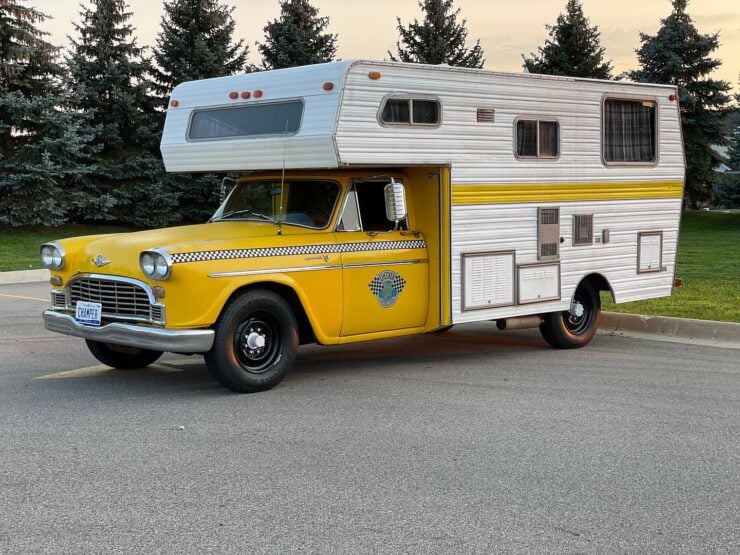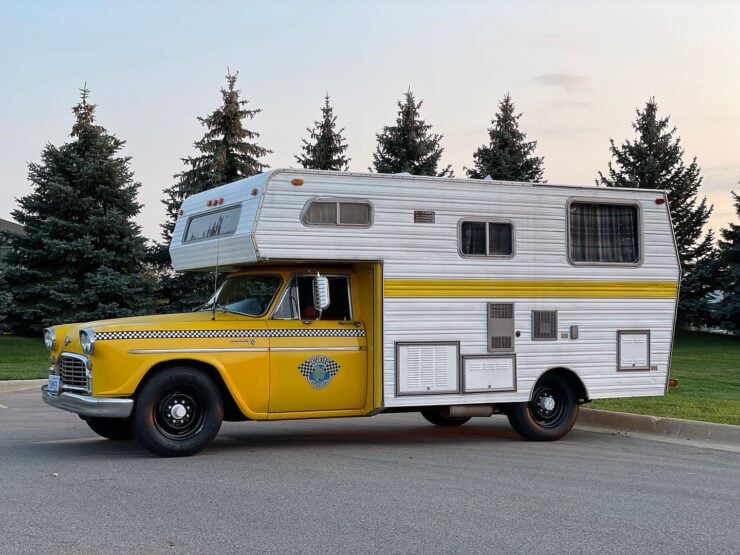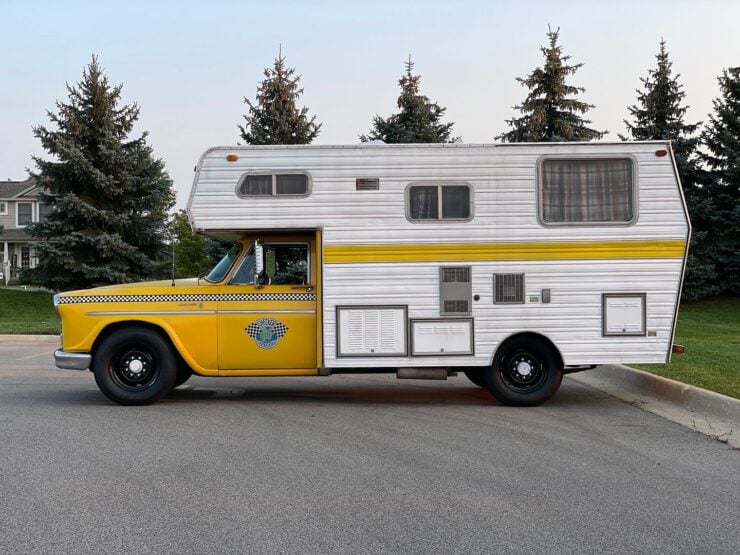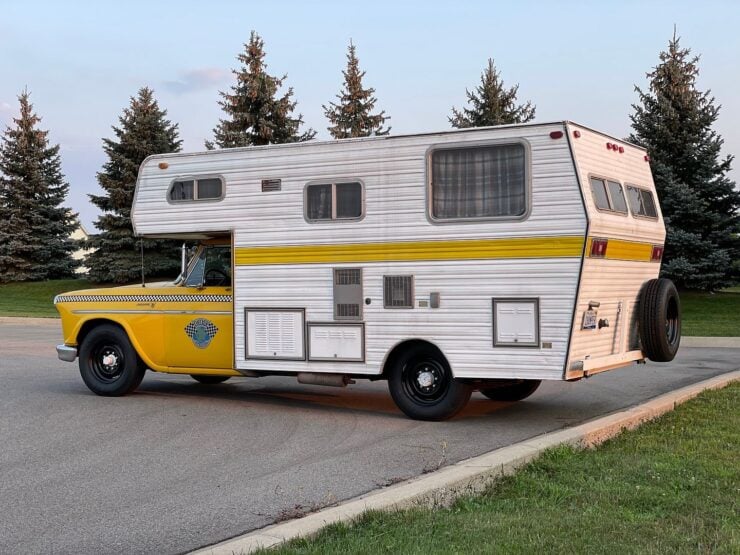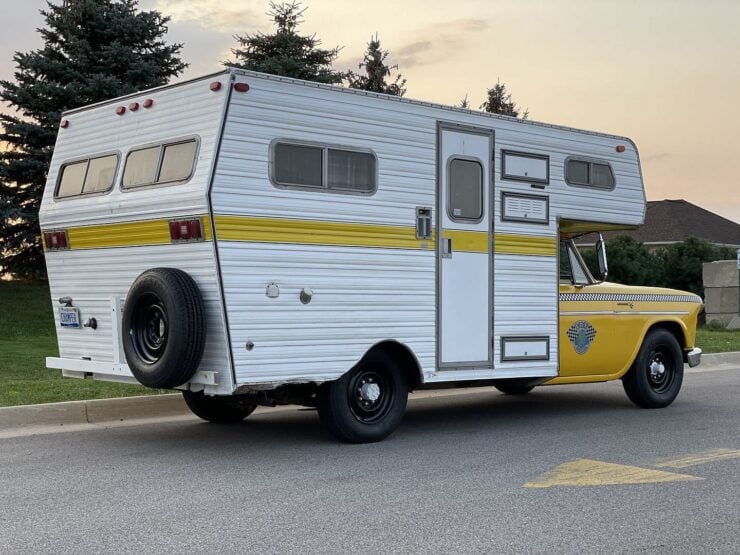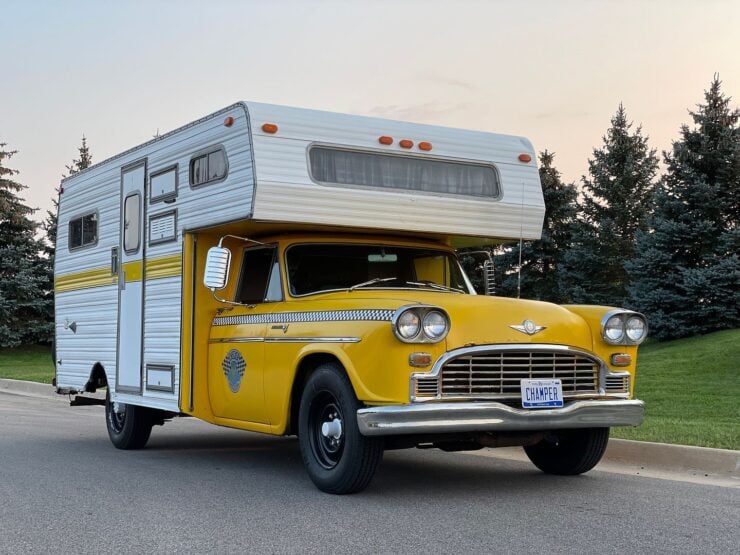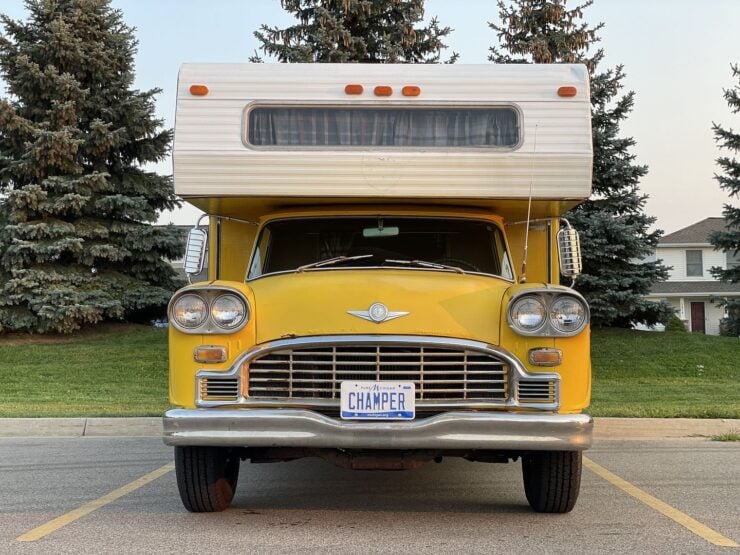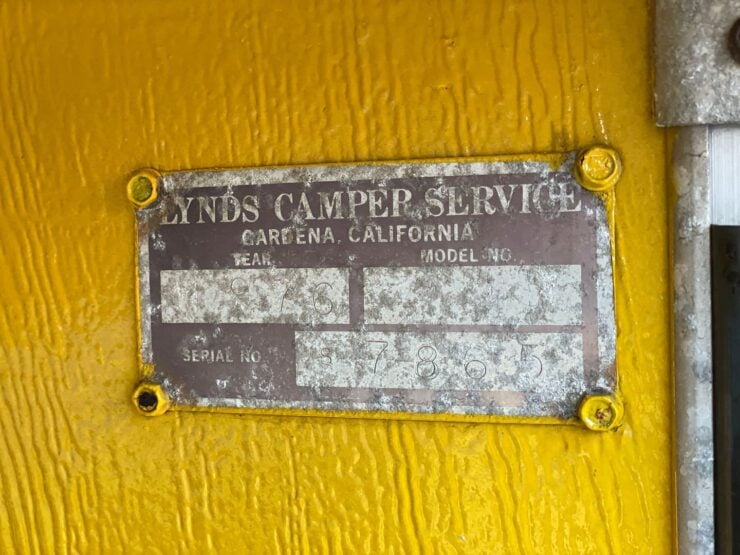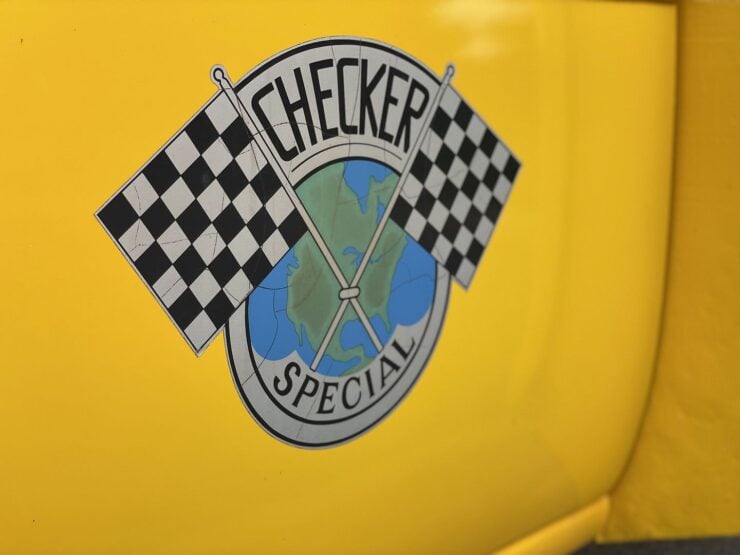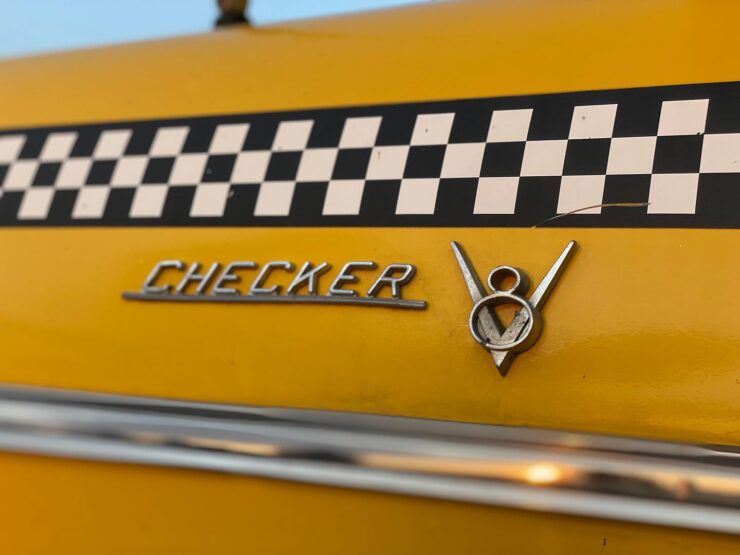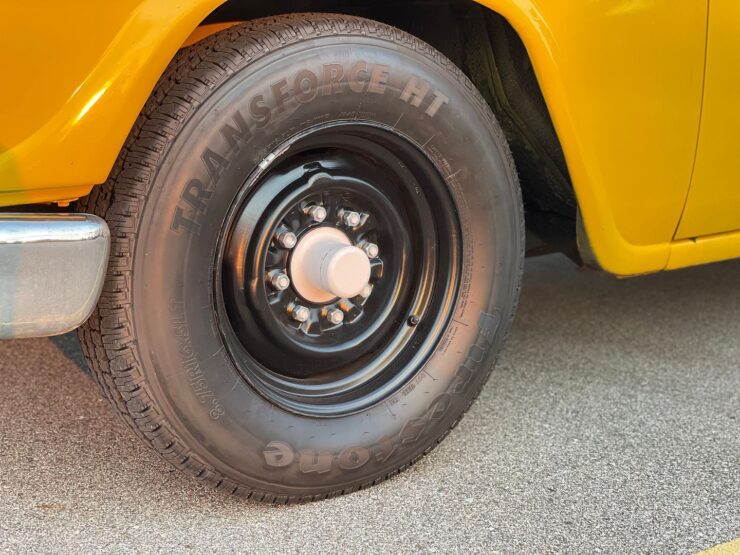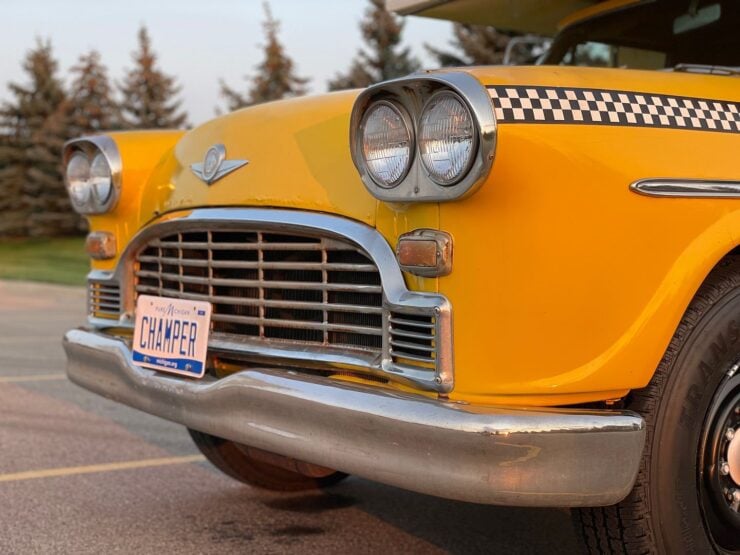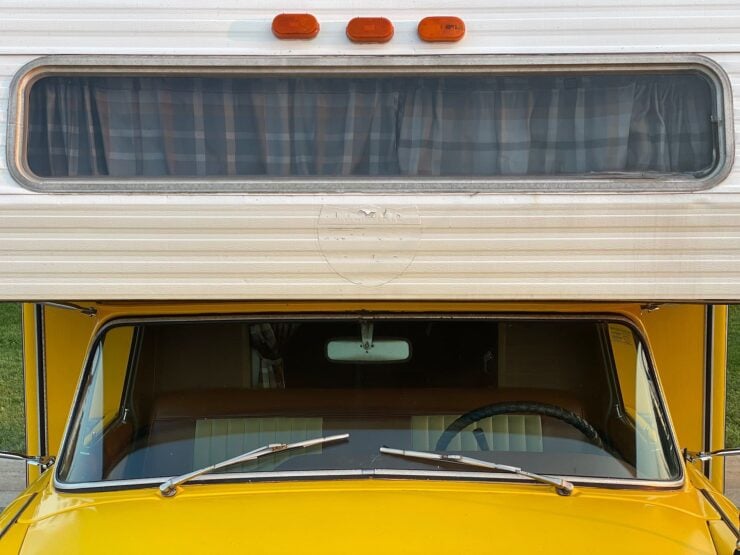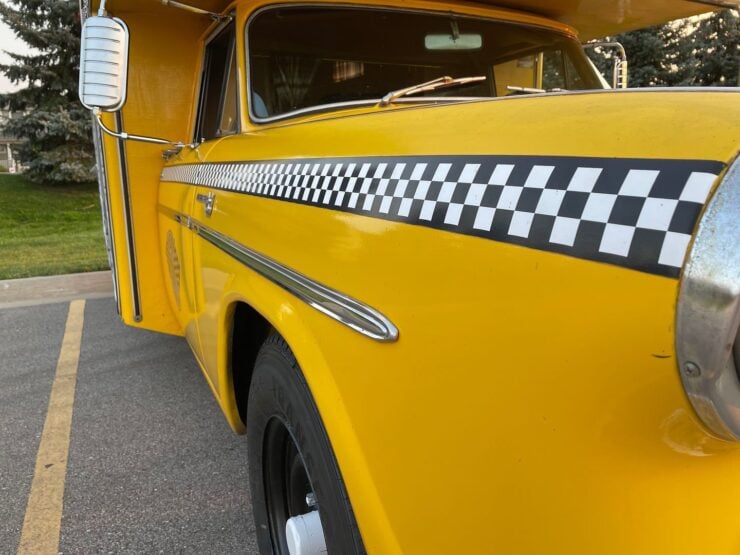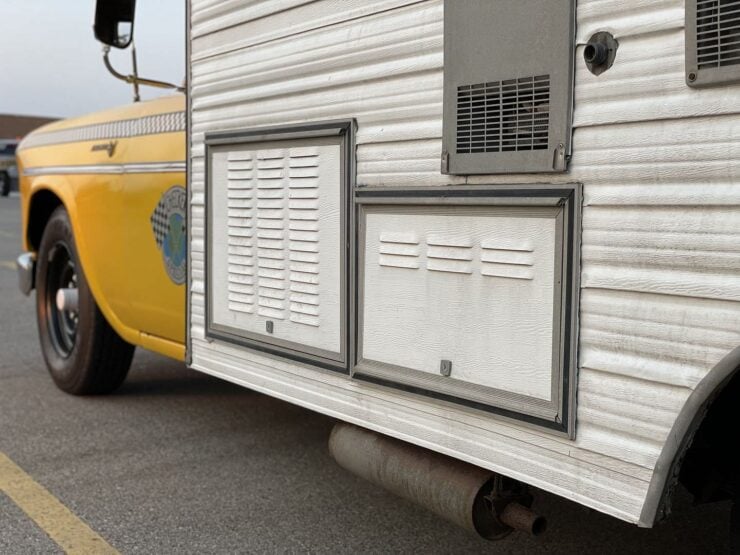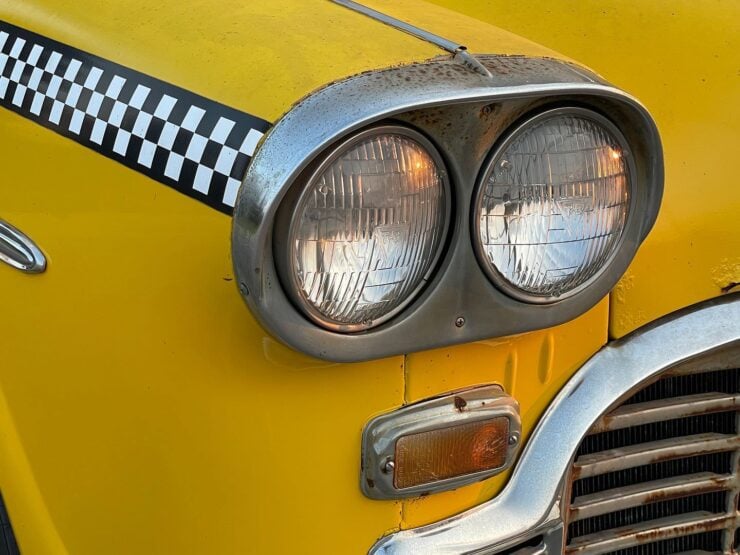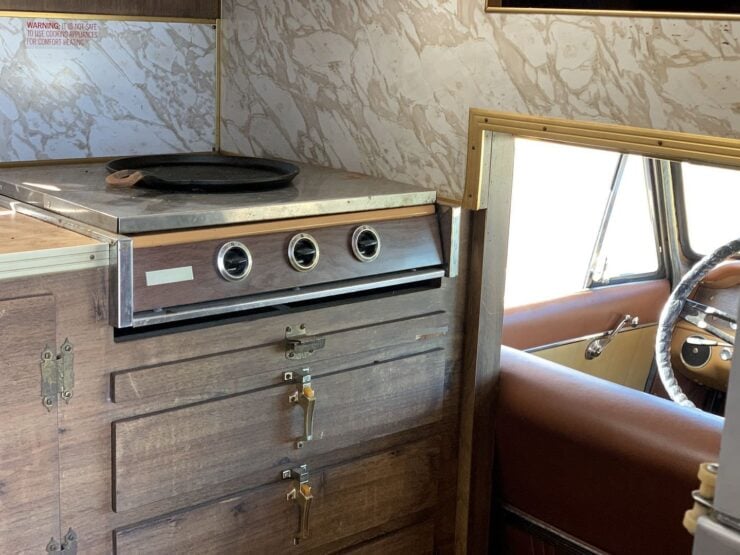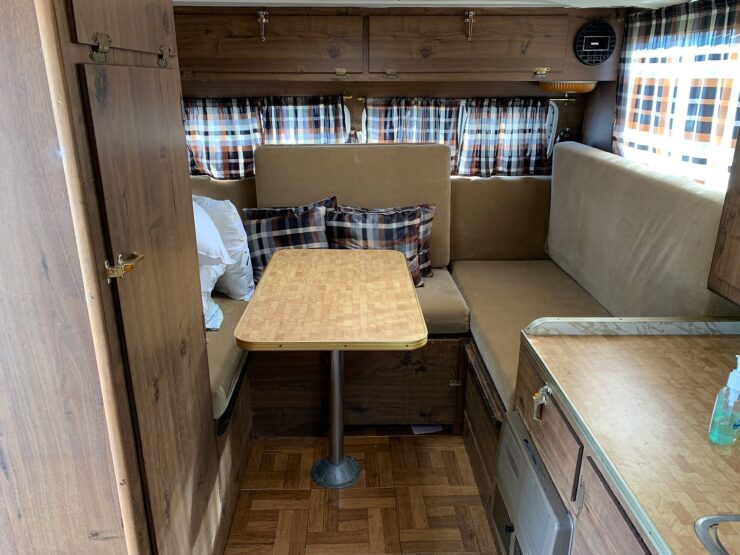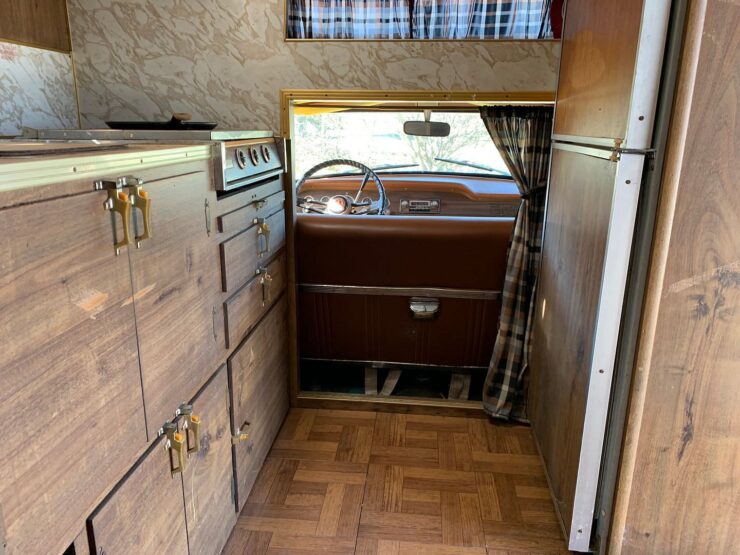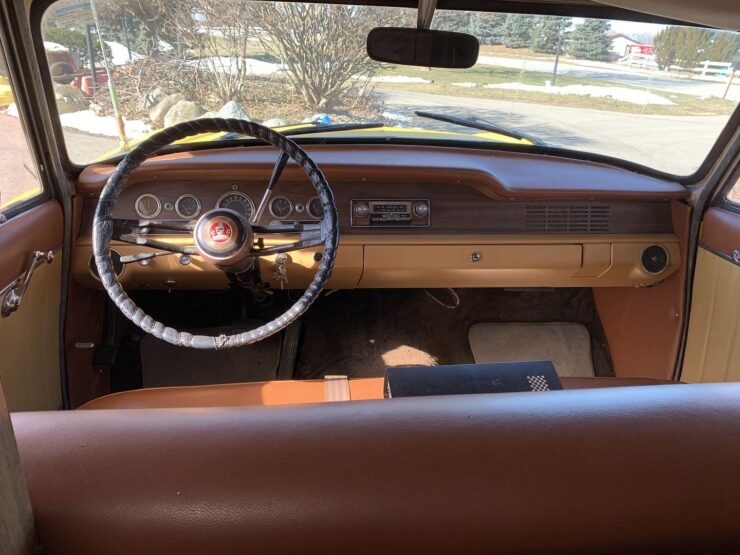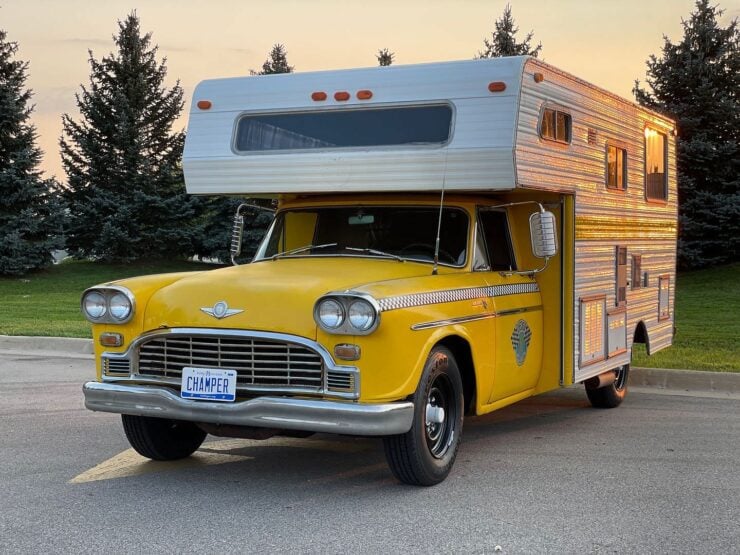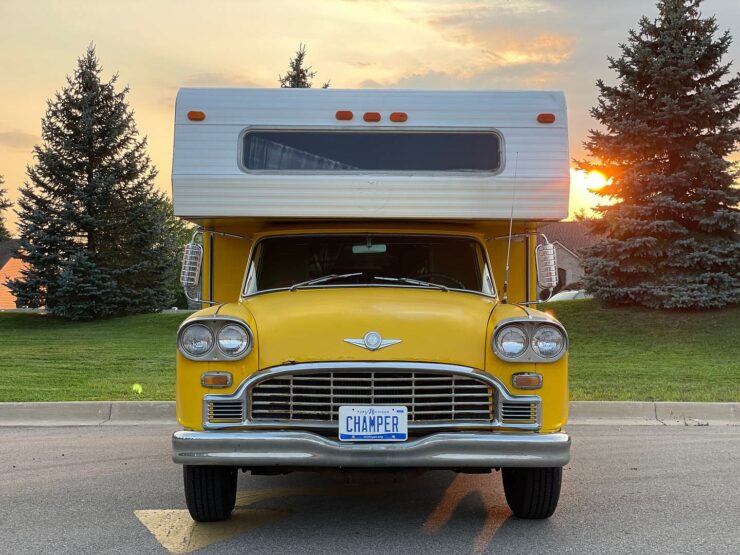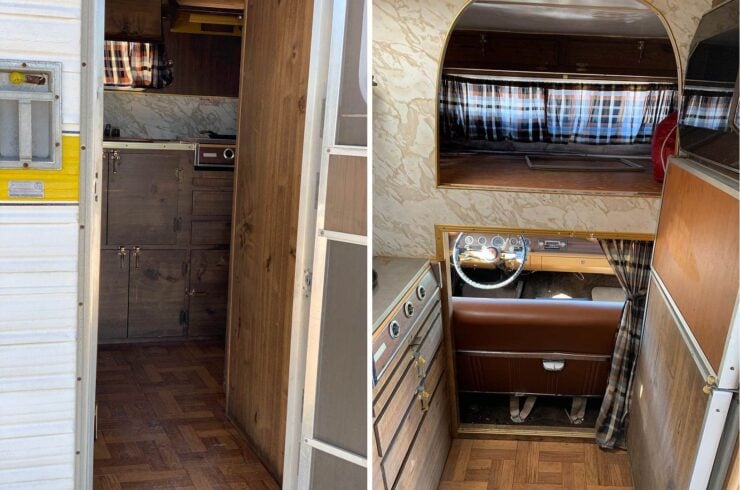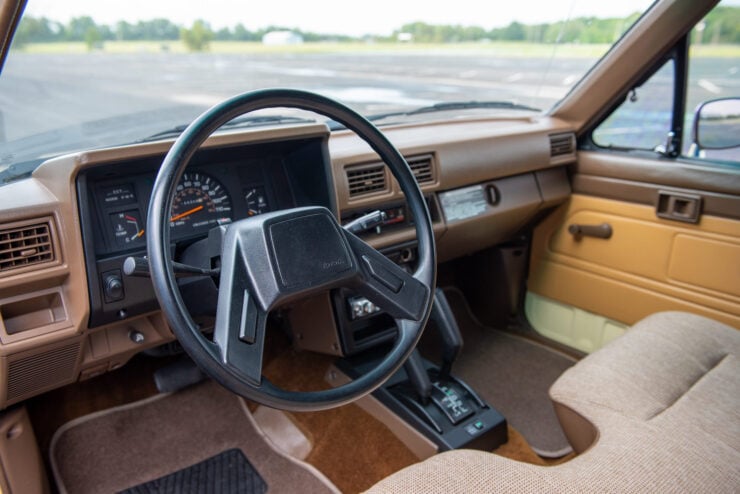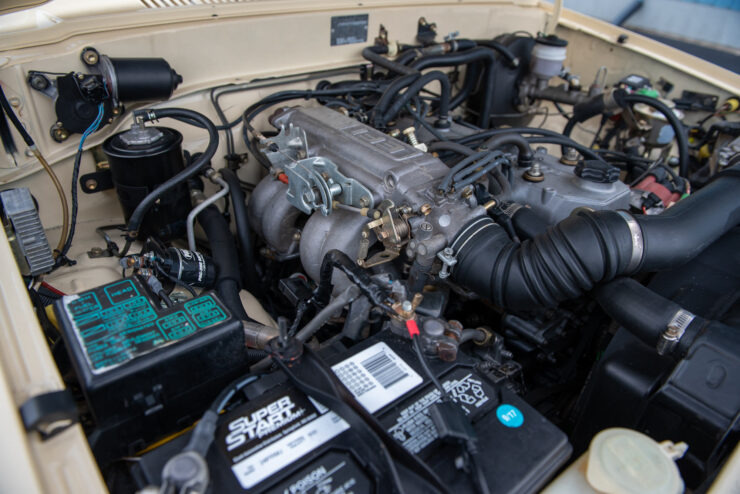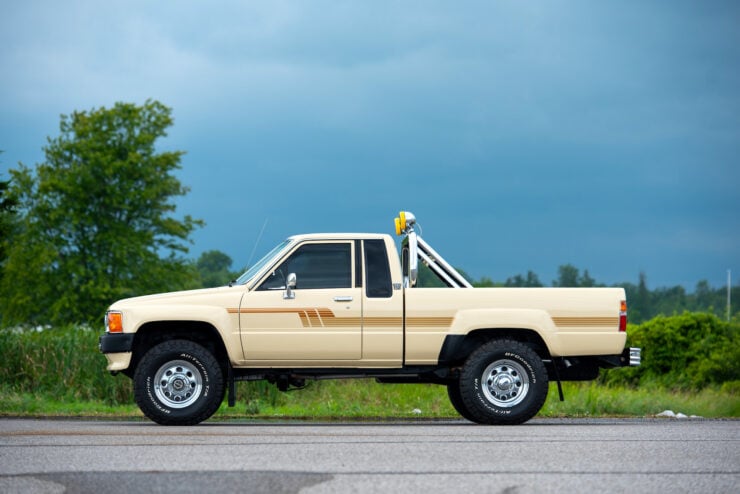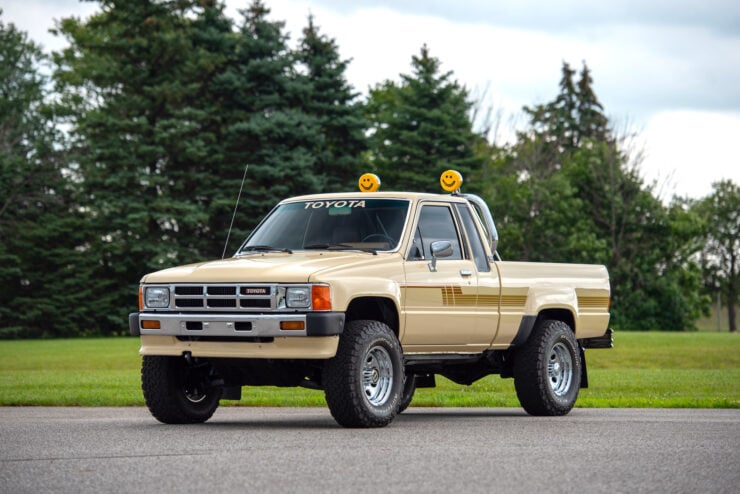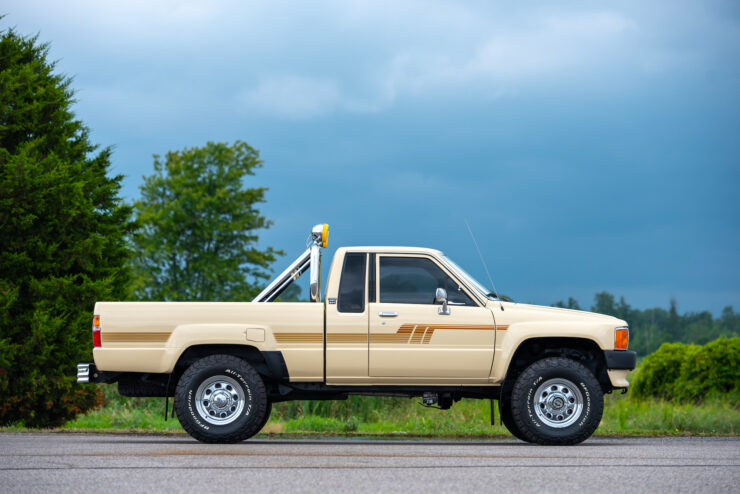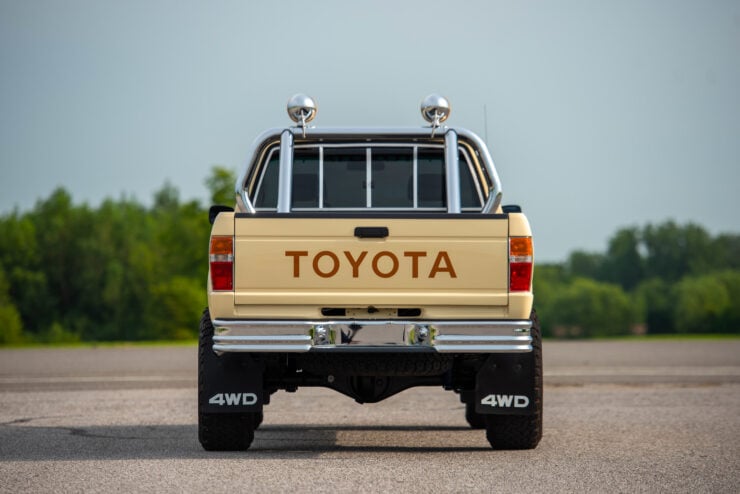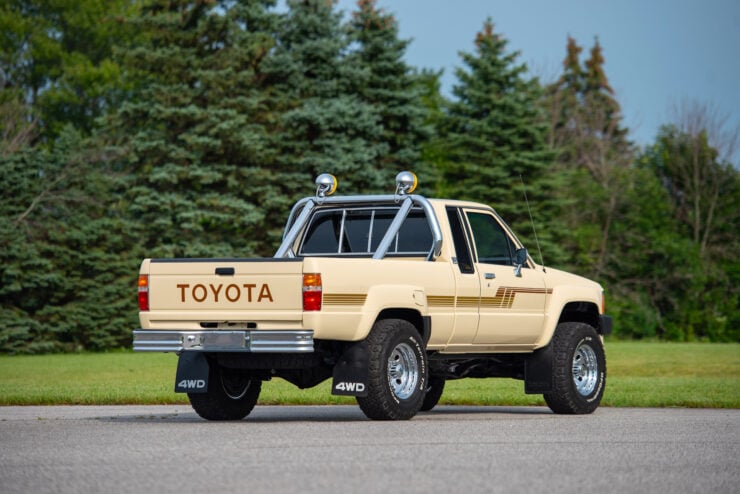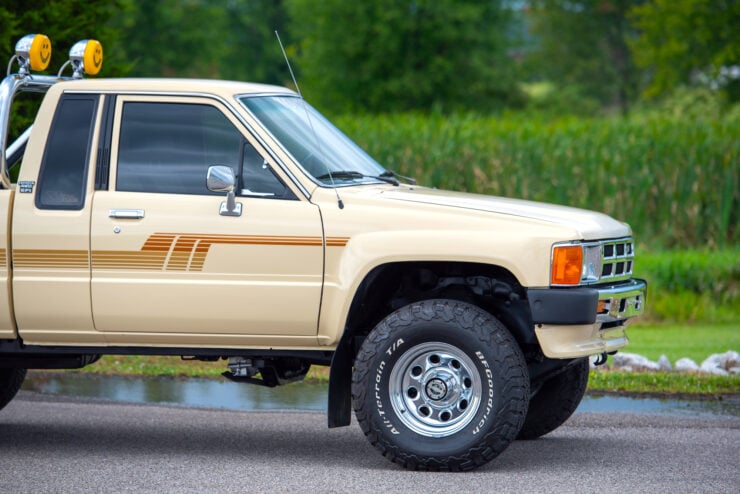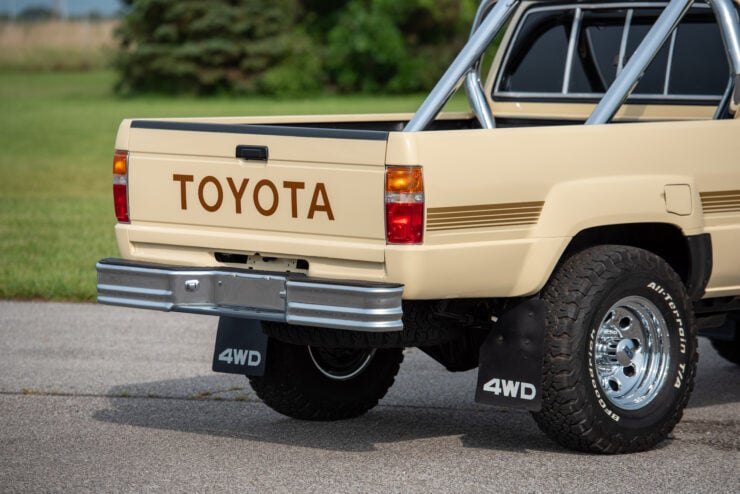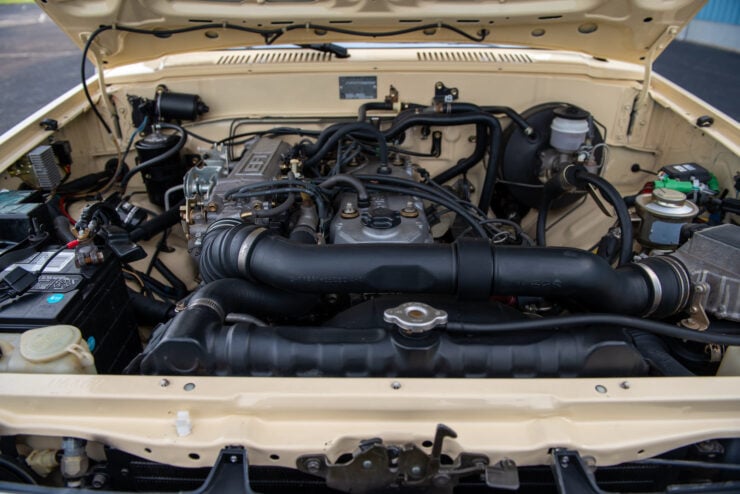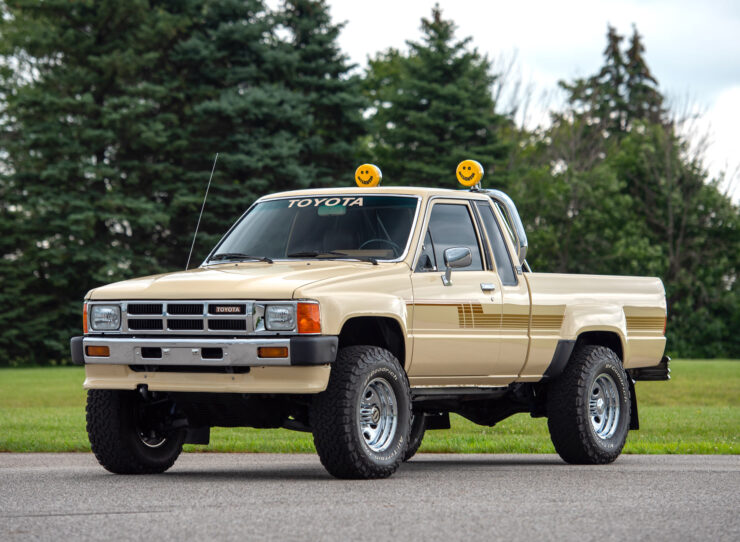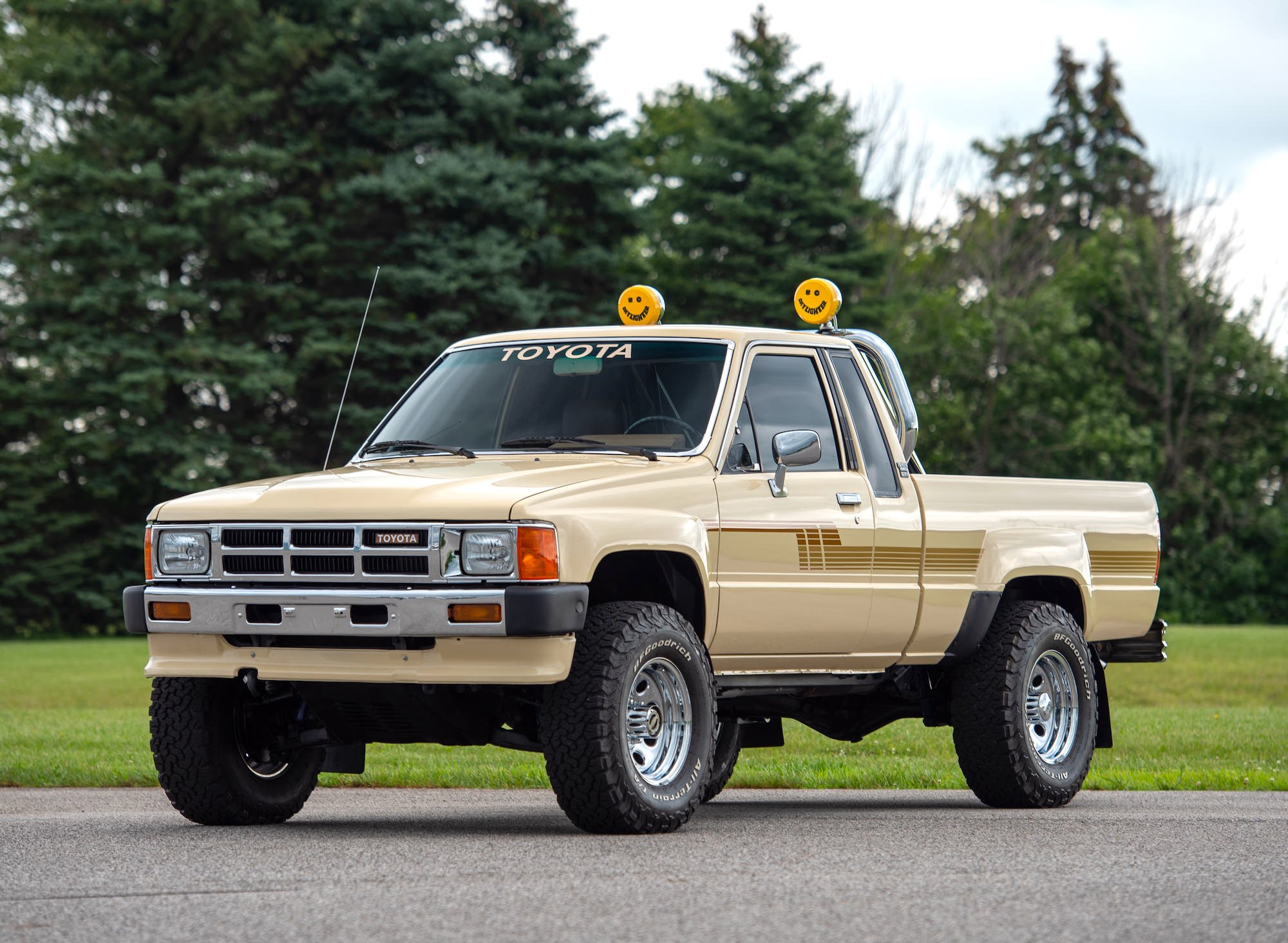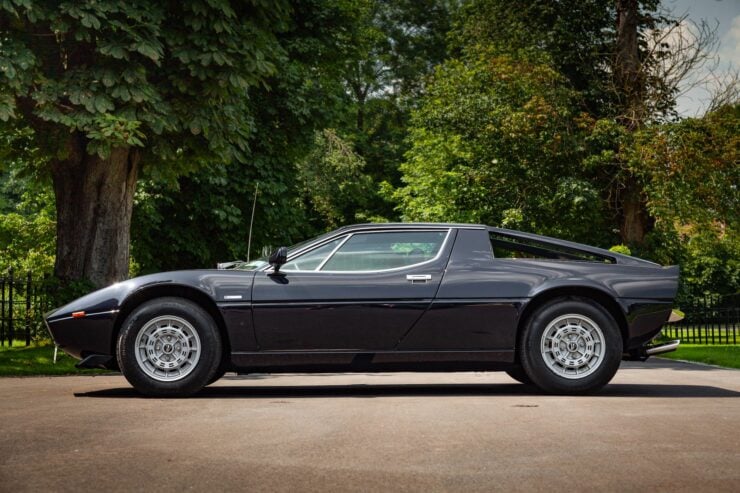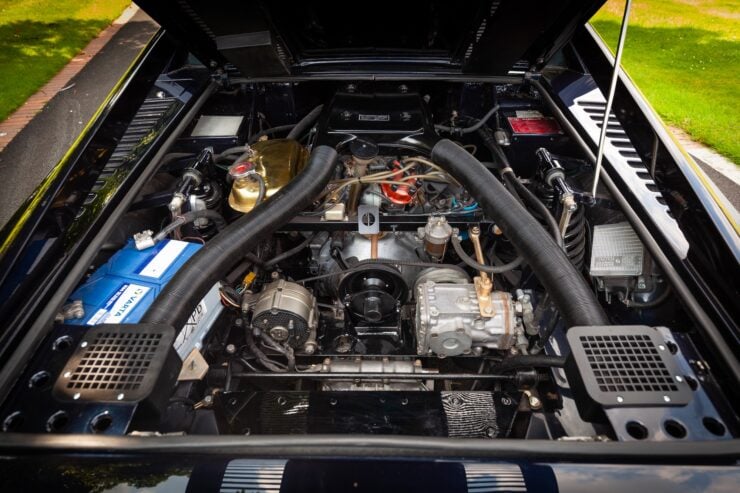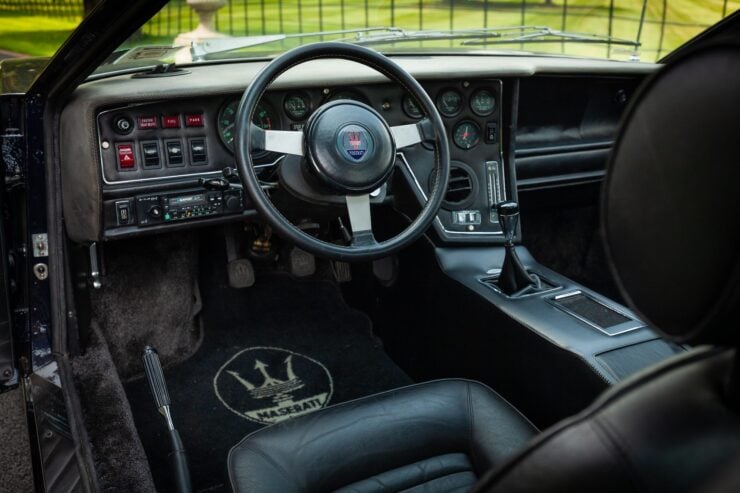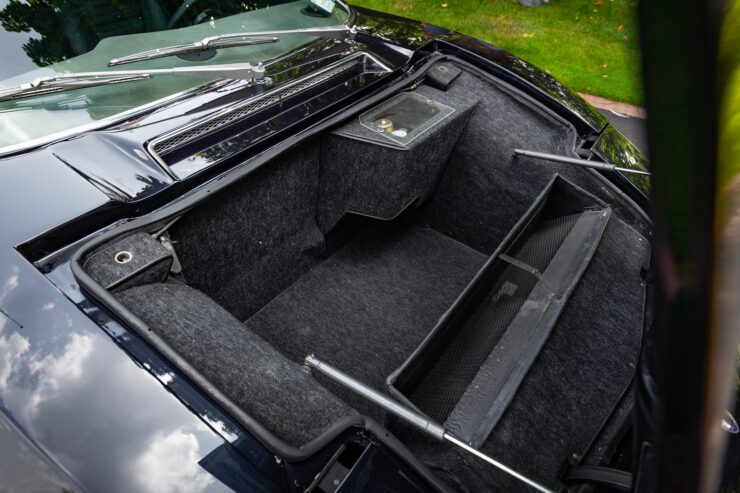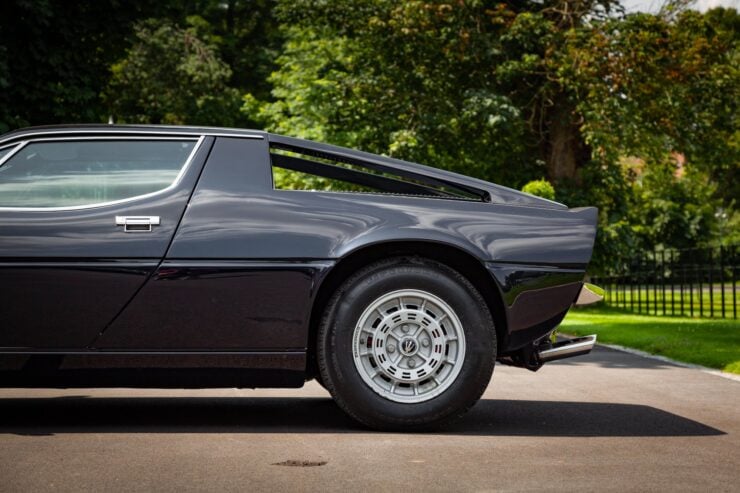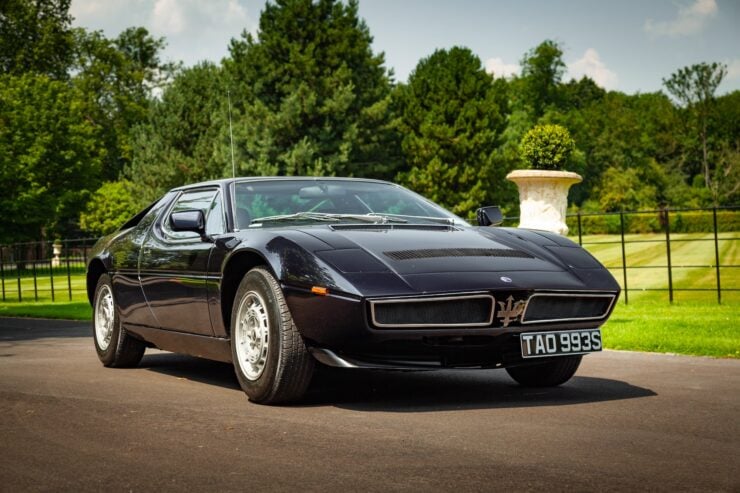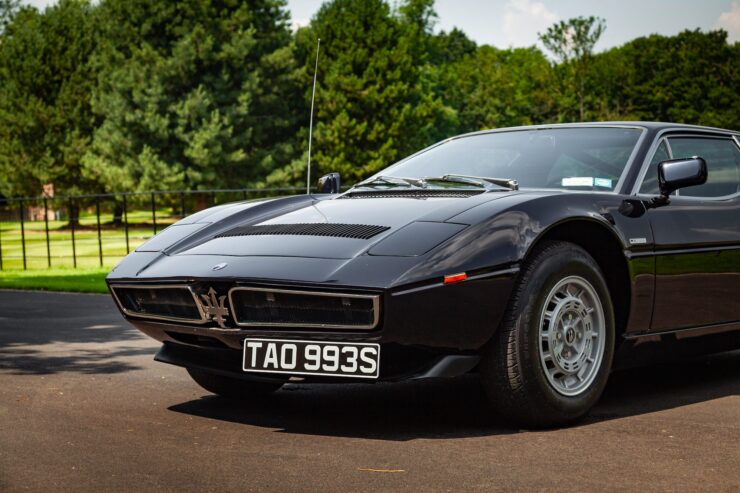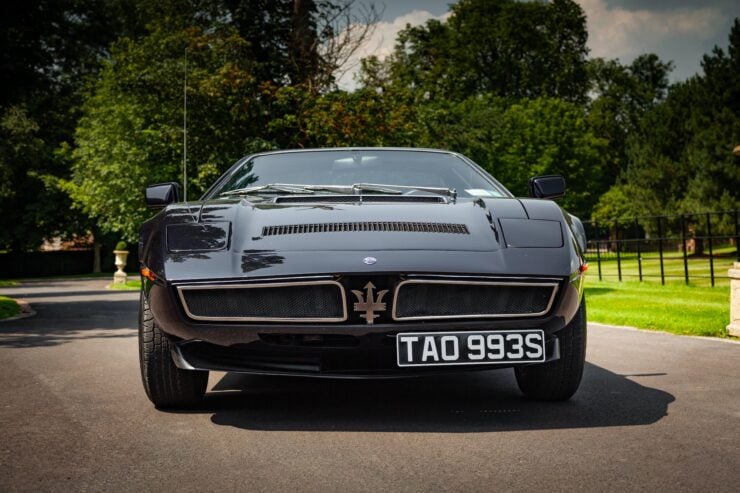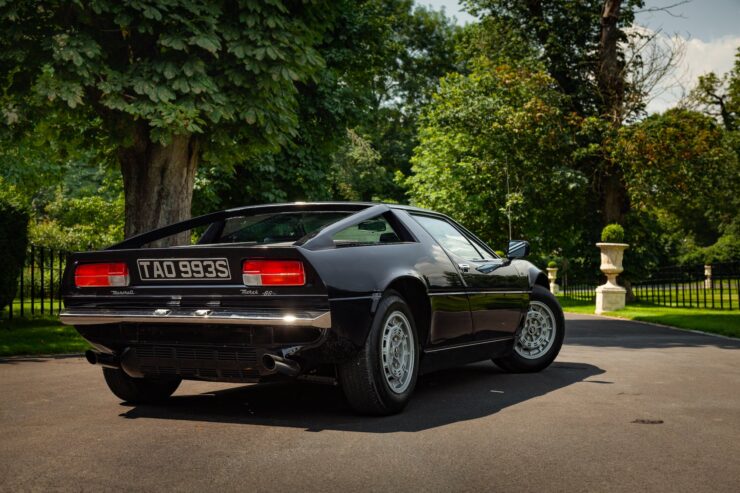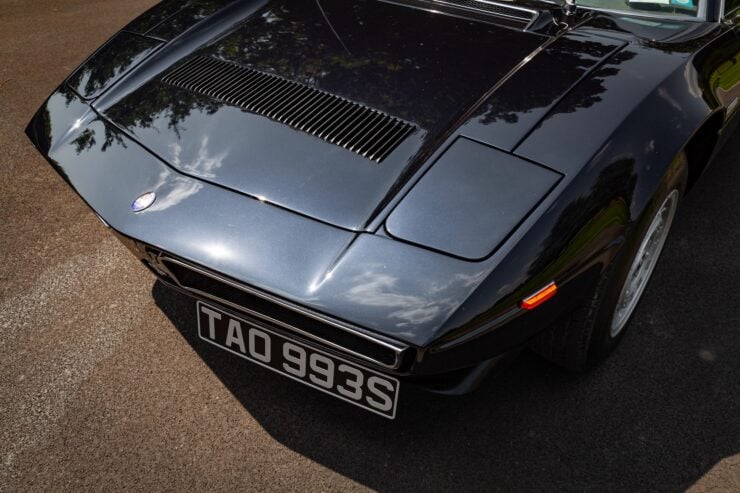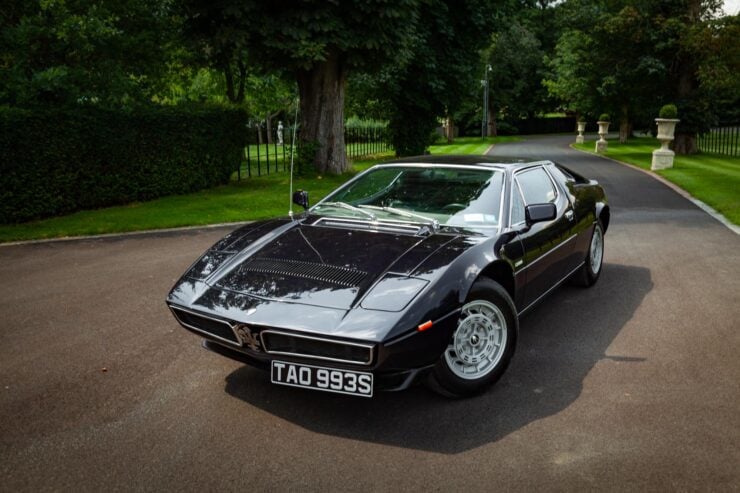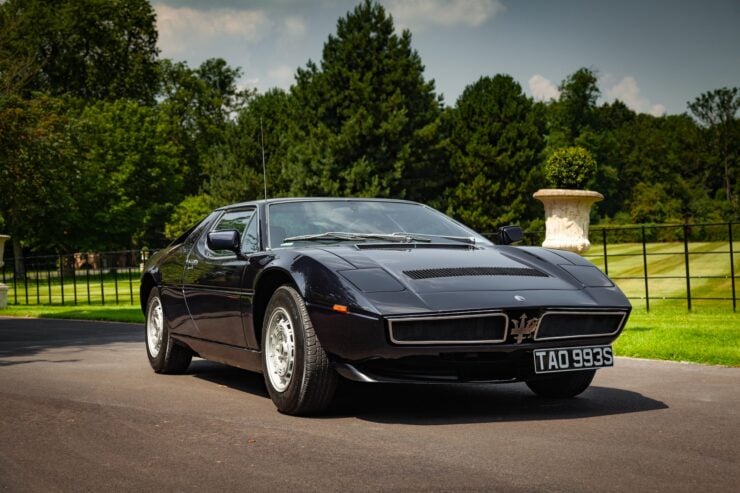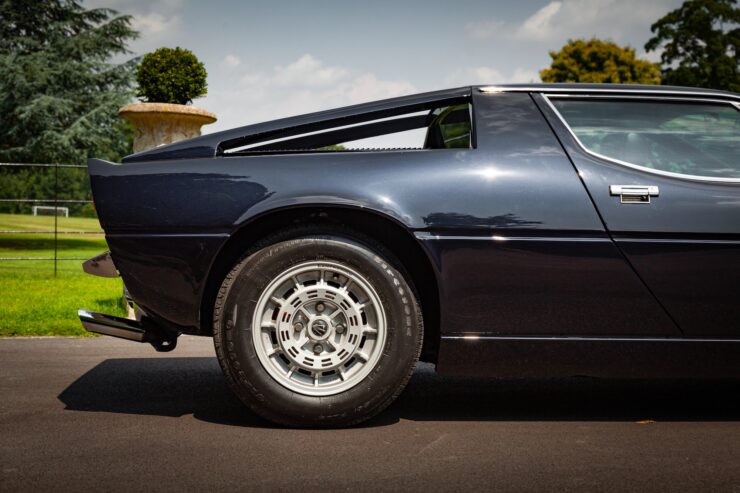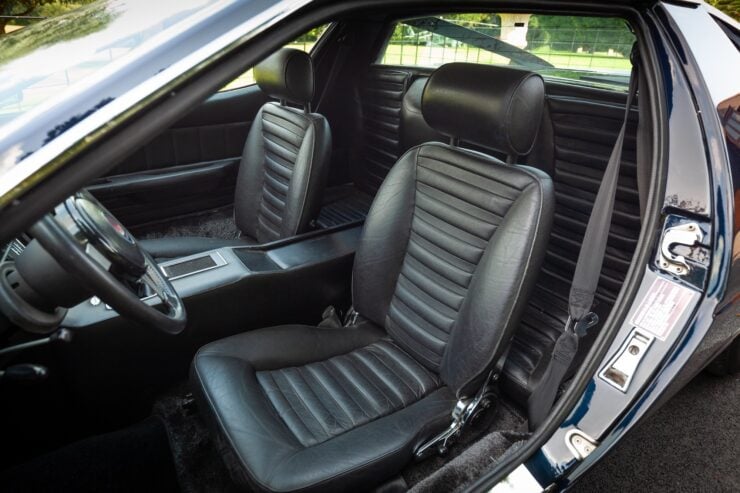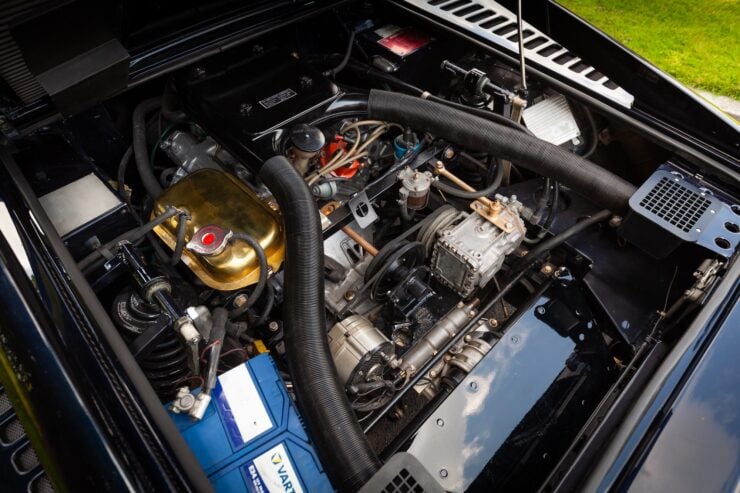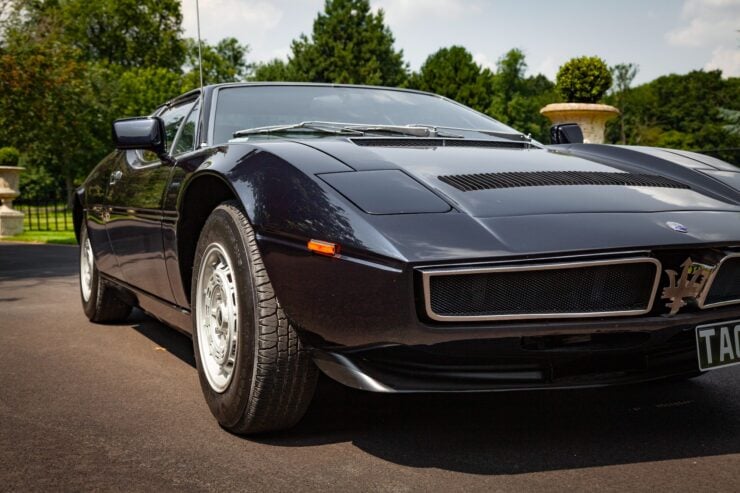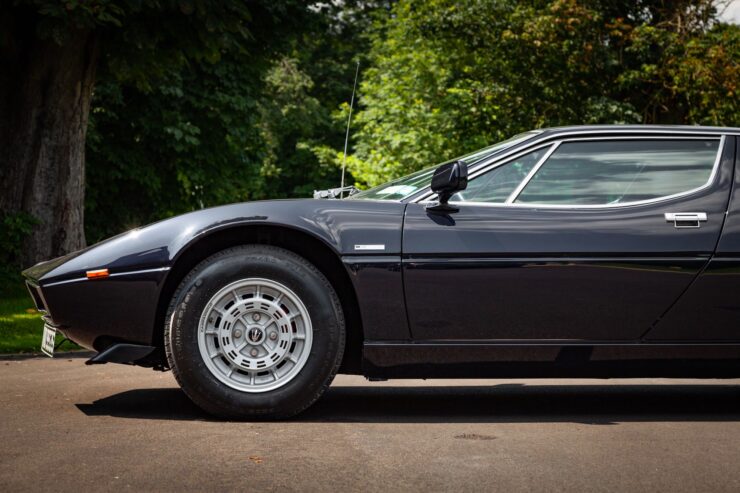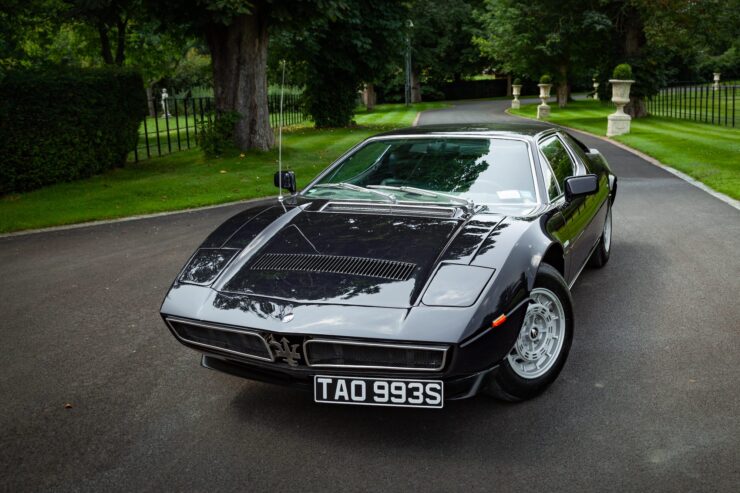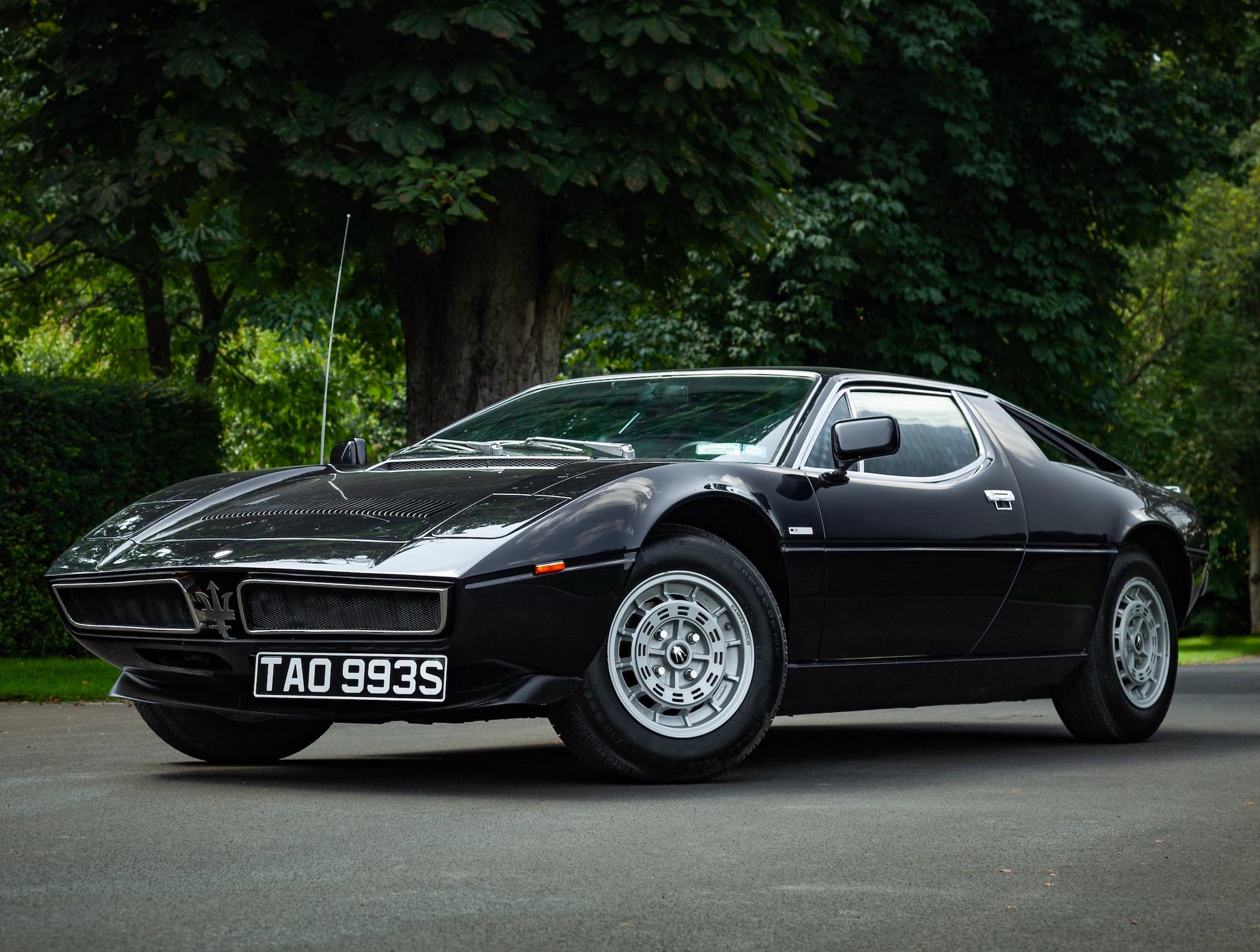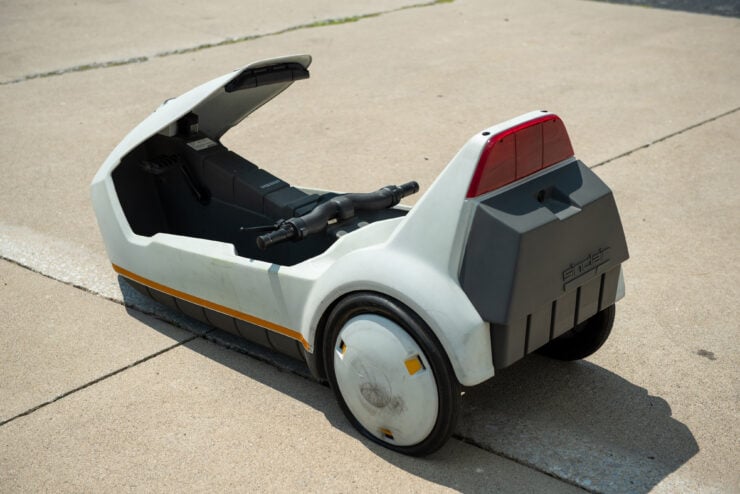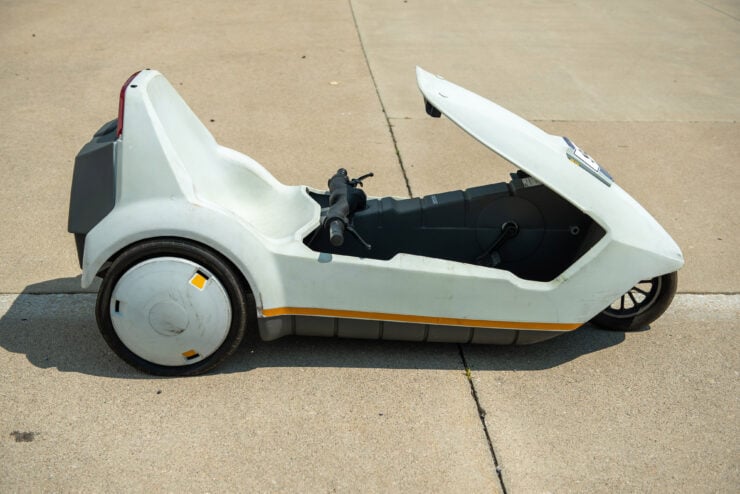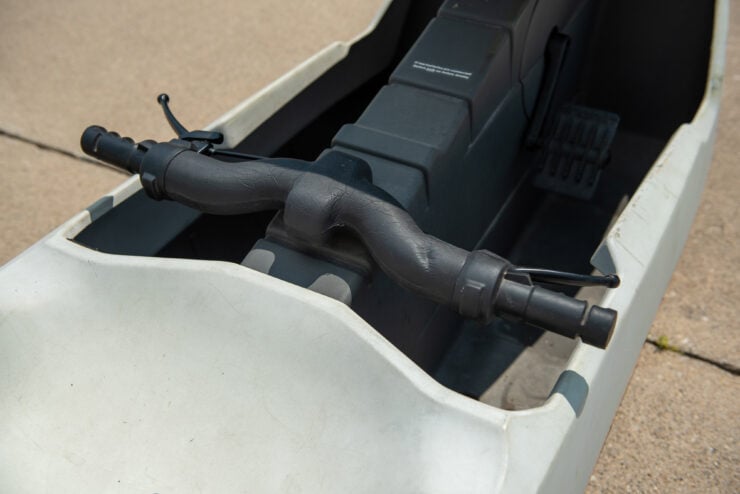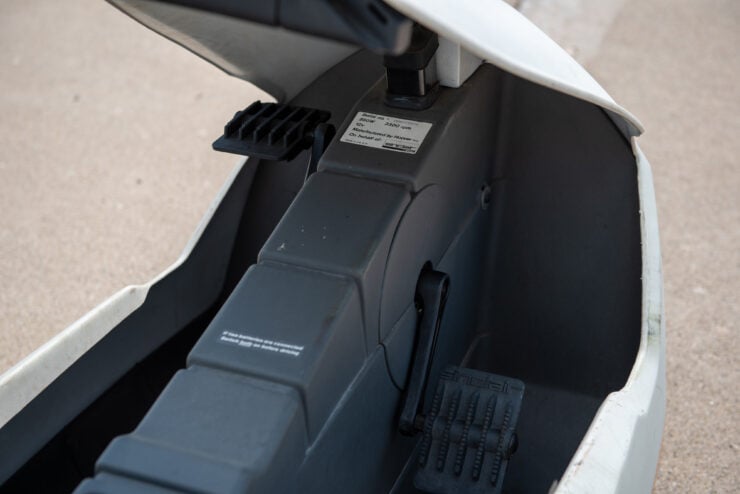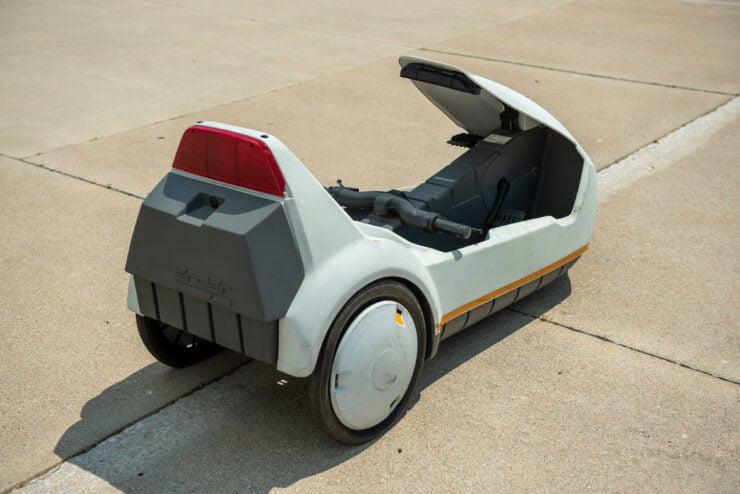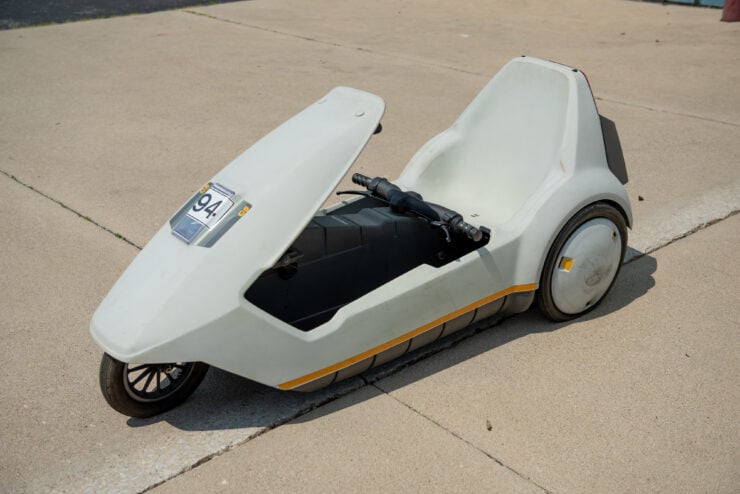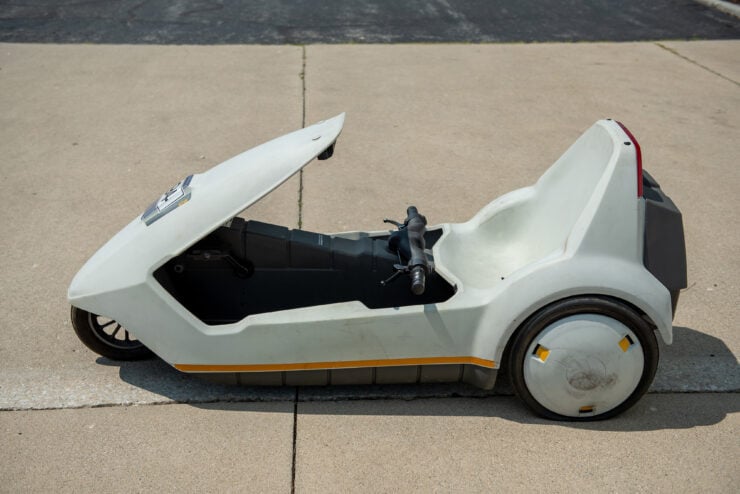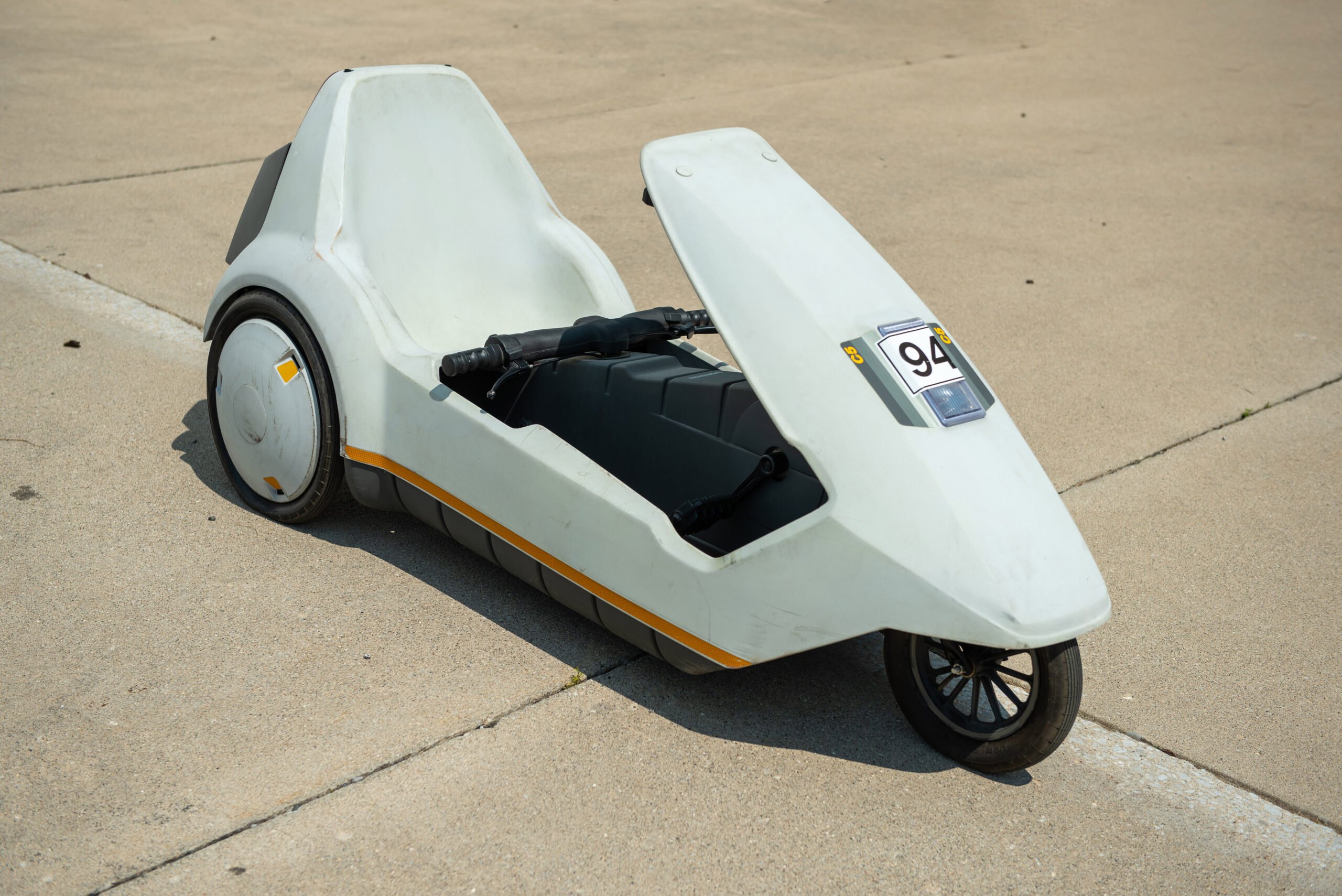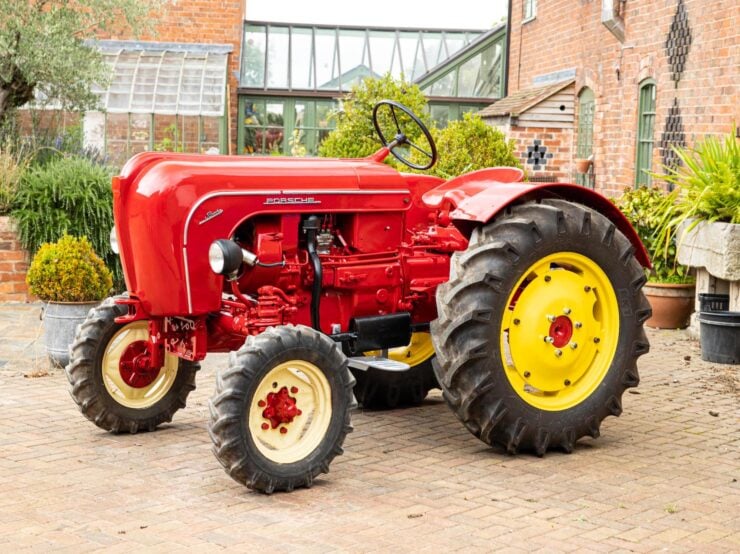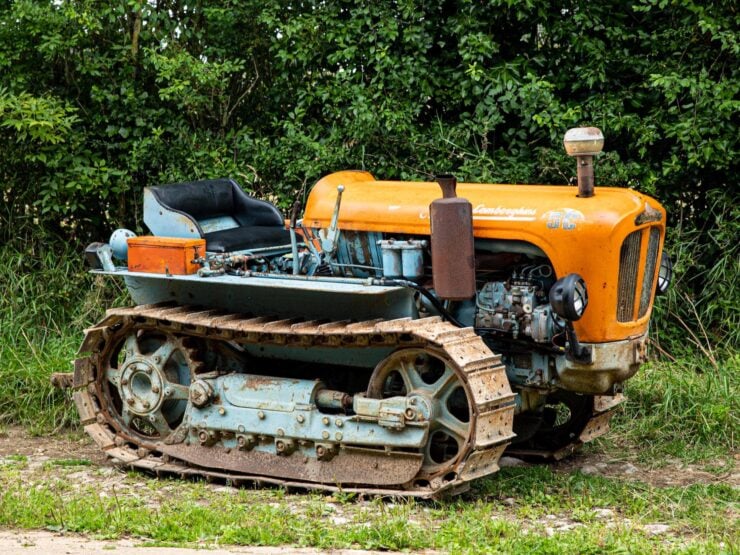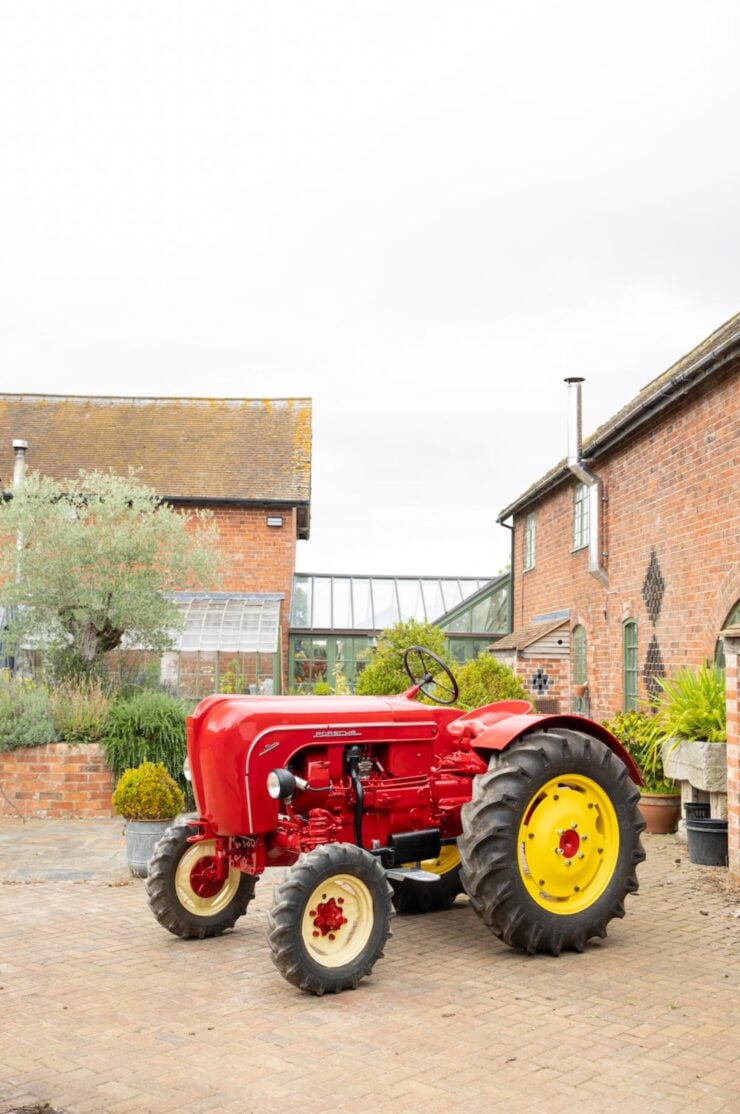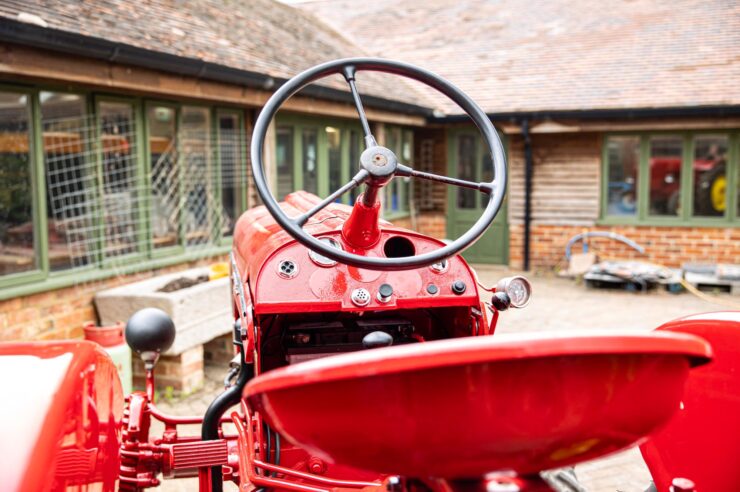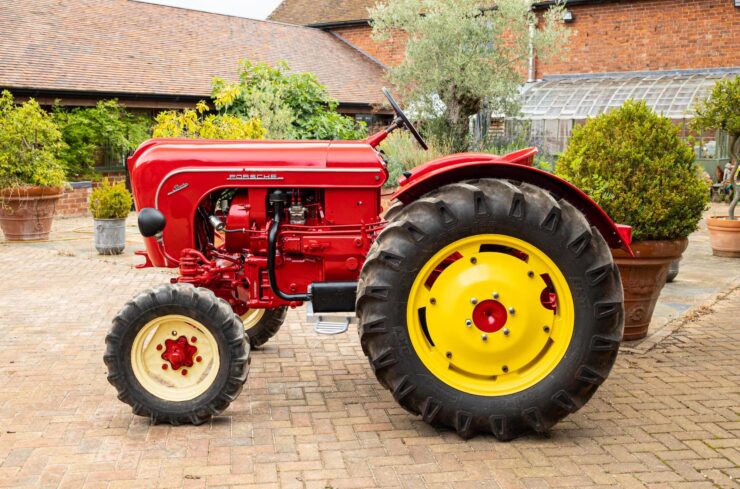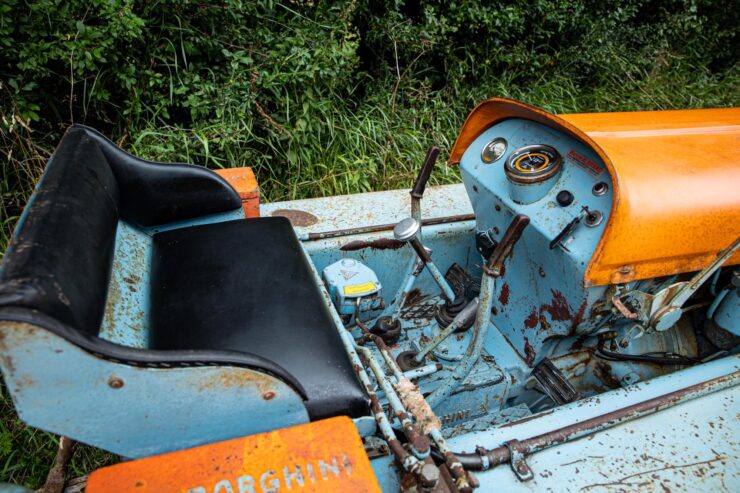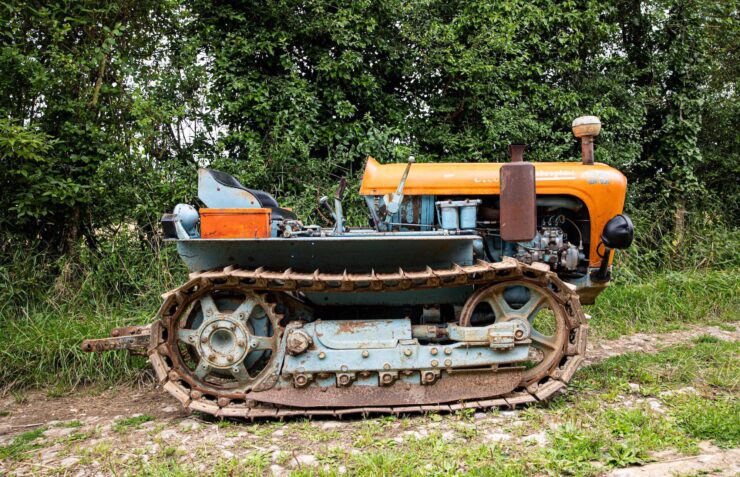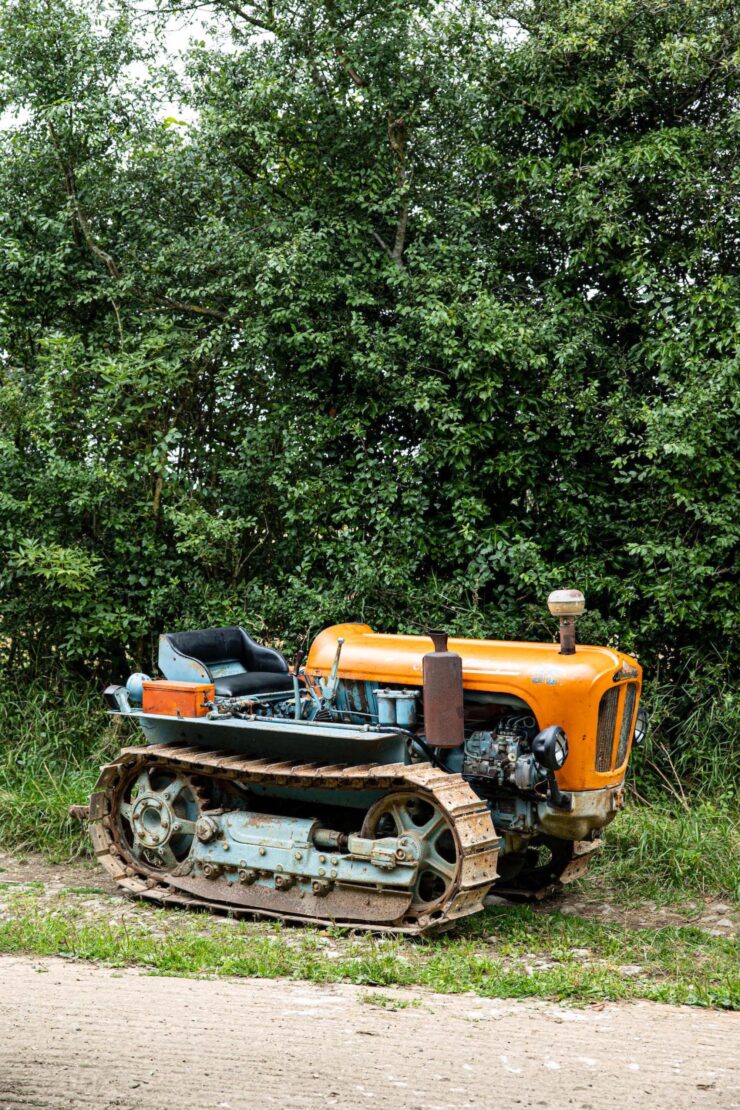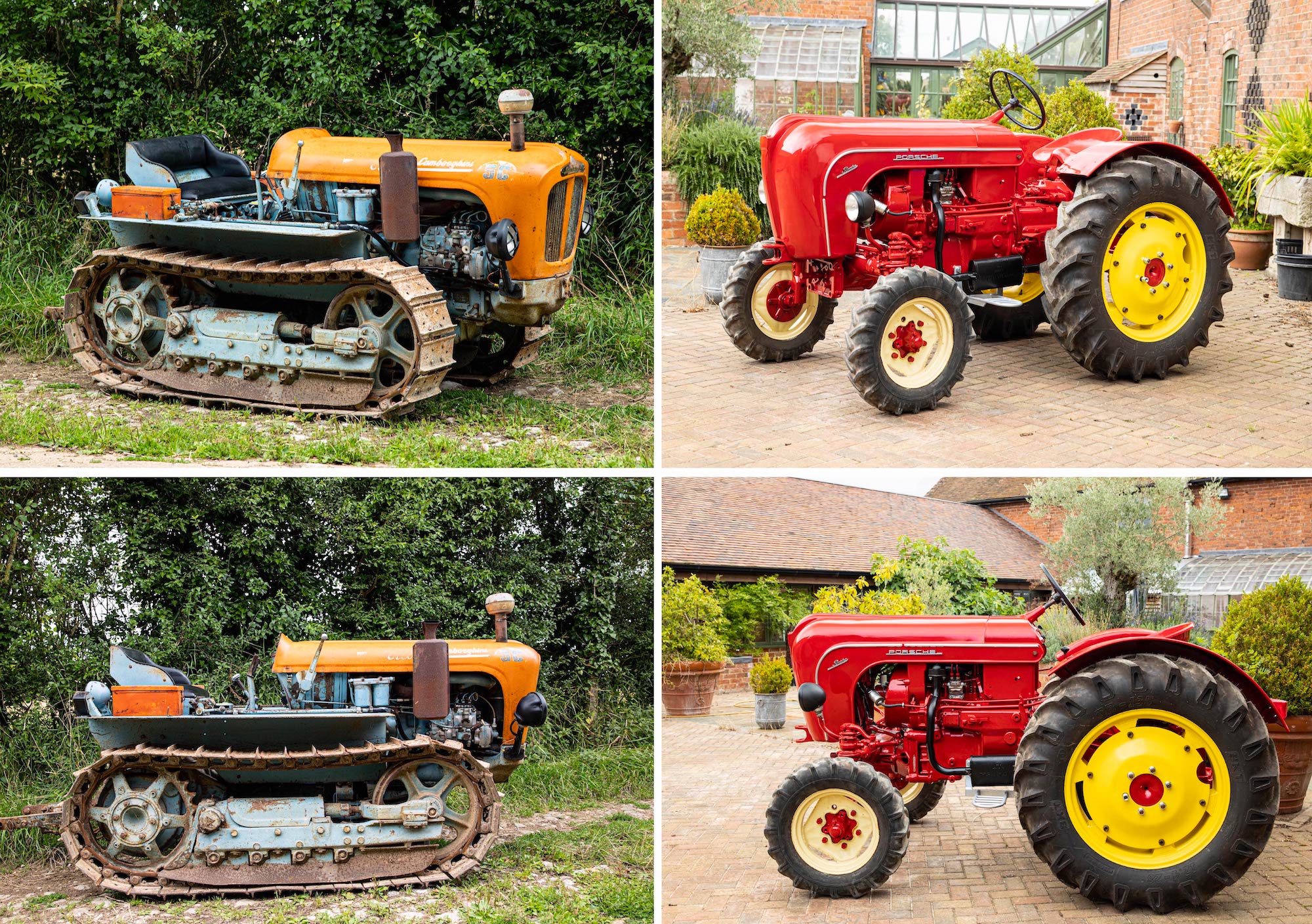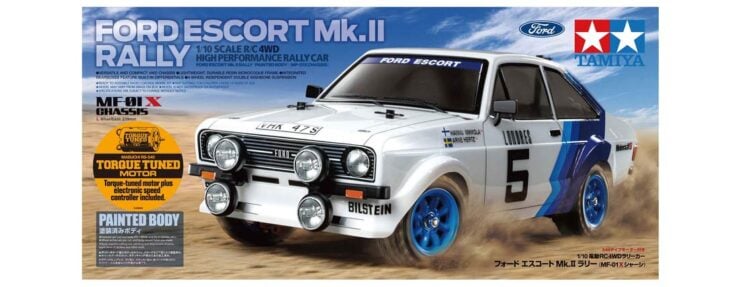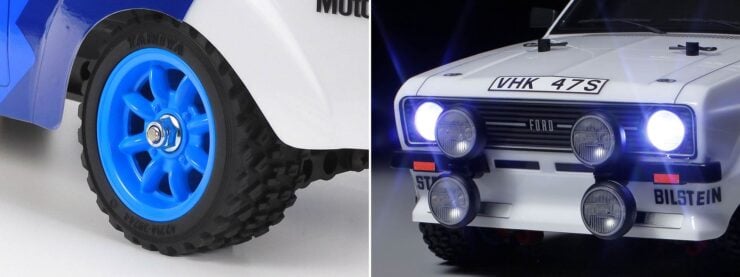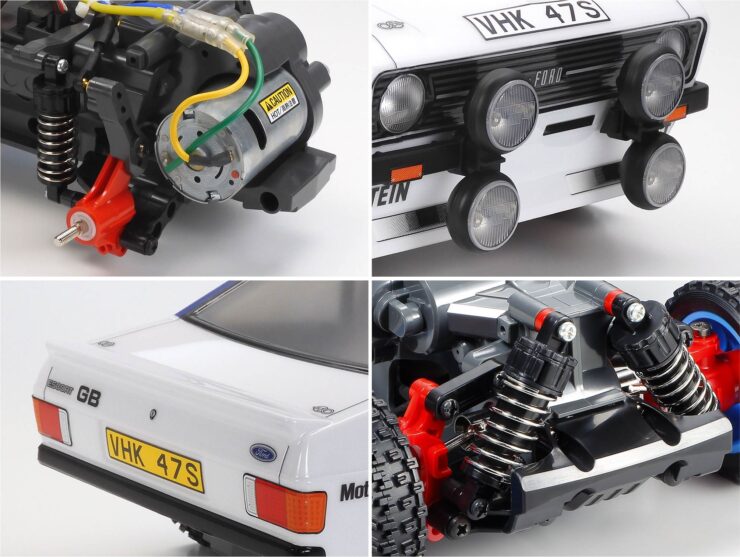This is the Champer, and as its portmanteau name implies it’s a Checker Camper, it was first converted into a camper back in 1977 and it features a slew of changes over a regular Checker including an uprated engine, transmission, and rear axle to better cope with the additional weight and drag.
The Checker Taxi is one of the most famous taxicab designs in history, alongside the ubiquitous London Black Cab. Checker had the model in production from 1958 until 1982 with only minimal updates to keep costs down.
Fast Facts – The Champer
- Although the Champer has been painted to look like a Checker Taxi it’s actually based on a 1965 Checker Marathon Station Wagon – a version of the Taxi design meant for regular consumer use.
- The Champer was built in 1977 by a company in California, the rear bodywork was removed to accommodate the camper shell.
- The Checker Marathon was sold from 1960 until 1982 as a regular passenger car for American buyers. It was offered in four-door sedan, four-door station wagon, and “Aerobus” configuration – an eight-door limousine model designed for airport pickups and drop-offs.
- Both the Checker Taxi and the Checker Marathon use the same fundamental parts supply with a few differences. Their distinctive 1950s styling has been made famous by countless films and television shows in which they’ve appeared and they’re popular collector’s items today.
The Checker Taxi: The Most Famous Cab In America
If you watch essentially any film or television show from the late 1950s well into the 1980s that has scenes in New York City, you can’t escape seeing Checker Taxis.
The yellow 1950s four-door sedans are moving landmarks that have become famous around the world, and they’re just as closely associated with New York as the Empire State Building, the Statue of Liberty, Times Square, or the Brooklyn Bridge.
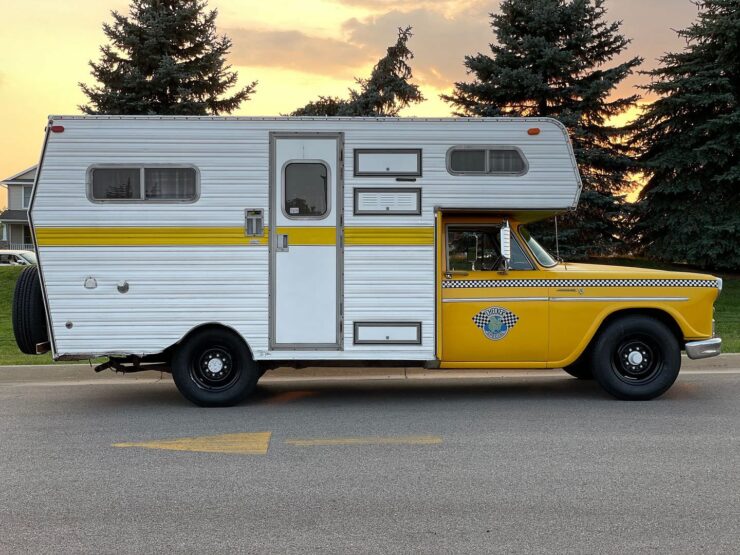
The original station wagon bodywork was completely removed from the B-pillar back to accommodate the new camper body.
The Checker Motors Corporation has a fascinating history that dates all the way back to 1922. Originally founded by Morris Markin in Chicago the company produced a slew of automobile designs both before and after World War II, but it would be the 1959 Checker Taxi that would make the company a globally recognized brand – even today 39 years after the model left production.
The styling of the Checker Taxi was largely left alone during its 20+ year production run, however there were small changes made here and there and marque experts can often identify the exact year of a car by its bumpers, lights, and other features.
Construction was relatively straightforward, with a body-on-chassis design and a front-mounted engine sending power back to a live axle rear end. A significant number of engine and transmission options were offered over the years from inline-sixes up to larger capacity V8s, with both automatic and manual transmissions available depending on the model year.
The large doors, ample space in the rear passenger compartment, the large trunk, and the general tank-like toughness of the Checker Taxi endeared them to generations of cab drivers and passengers.
Today there are many surviving Checker Taxis and there’s a thriving enthusiast movement dedicated to them and their Checker Marathon siblings. Prices on the open market can vary from $10,000+ on the lower end to $20,000+ for excellent examples, owners report that the only downside is being constantly stopped by people who want to take pictures.
The Champer – A Checker Taxi Camper
The vehicle you see here is the only Champer known to exist in the world, it’s a Checker Taxi Camper that started life as a standard 1965 Checker Marathon Station Wagon.
The Marathon was the regular non-commercial version of the Taxi, the company sold thousands of them to Americans who wanted a simple no-frills daily driver with styling that would never be usurped by the next year’s model release.
In 1977 the vehicle was transformed into a camper by Lynds Camper Service in Cardena, California.
The conversion was relatively in-depth, the entire body was cut away from the B-pillar back to accommodate the camper shell, a Chevrolet small-block 400 cubic inch V8 from a 1977 GMC one-ton van was fitted.
A mysterious heavy-duty 8-lug rear axle was also fitted to handle the extra weight and drag, the current owner hasn’t been able to identify it yet but he has discovered that the brake calipers match a 1975 Ford F-350, and the master cylinder matches a 1975 International Scout.
It seems that many unusual off the shelf parts were used as needed during construction, as you might expect from a smaller-scale camper company.
Inside the camper you’ll find everything you might need with the exception of a restroom, it has a gas burner stove, an oven, a fridge, a generator, drawers, cupboards, an upper level double bed and a lower level couch section that converts into two more beds.
The Champer’s History
The early history of the Champer isn’t known, the current owner Bill Beurkens acquired it from the parents of the previous owner who was tragically killed in a helicopter accident many years ago. His parents kept it on their property in Louisiana, understandably reticent to sell something that reminded them of their son.
As the years passed and the Champer fell into disrepair due to Louisiana’s regular hurricanes the couple resolved to sell it to ensure it would be repaired and preserved – this is how Beurkens, a nationally renowned authority on Checkers, came to acquire it.
Once he got the Champer back home in Michigan, Beurkens set to work. He rebuilt the braking system first for safety, then rebuilt he fuel system. New tires went onto refurbished wheels, and the engine and drivetrain were given all the maintenance they needed after sitting for so long, including new fluids and gaskets.
Beurkens now reports that the Champer drives very well, and that it gets even more looks than his eight-door Checker Aerobus limousine. His list of jobs is ongoing, next up is some minor exhaust work and refinishing the interior ceiling.
If you’d like to see another unusual camper you can click here to see the Super Bugger, a VW Beetle sample from the same era as the Champer.
Images courtesy of Bill Beurkens, they may only be reused with a copyright credit to Bill Beurkens and a credit and link back to this article on Silodrome.
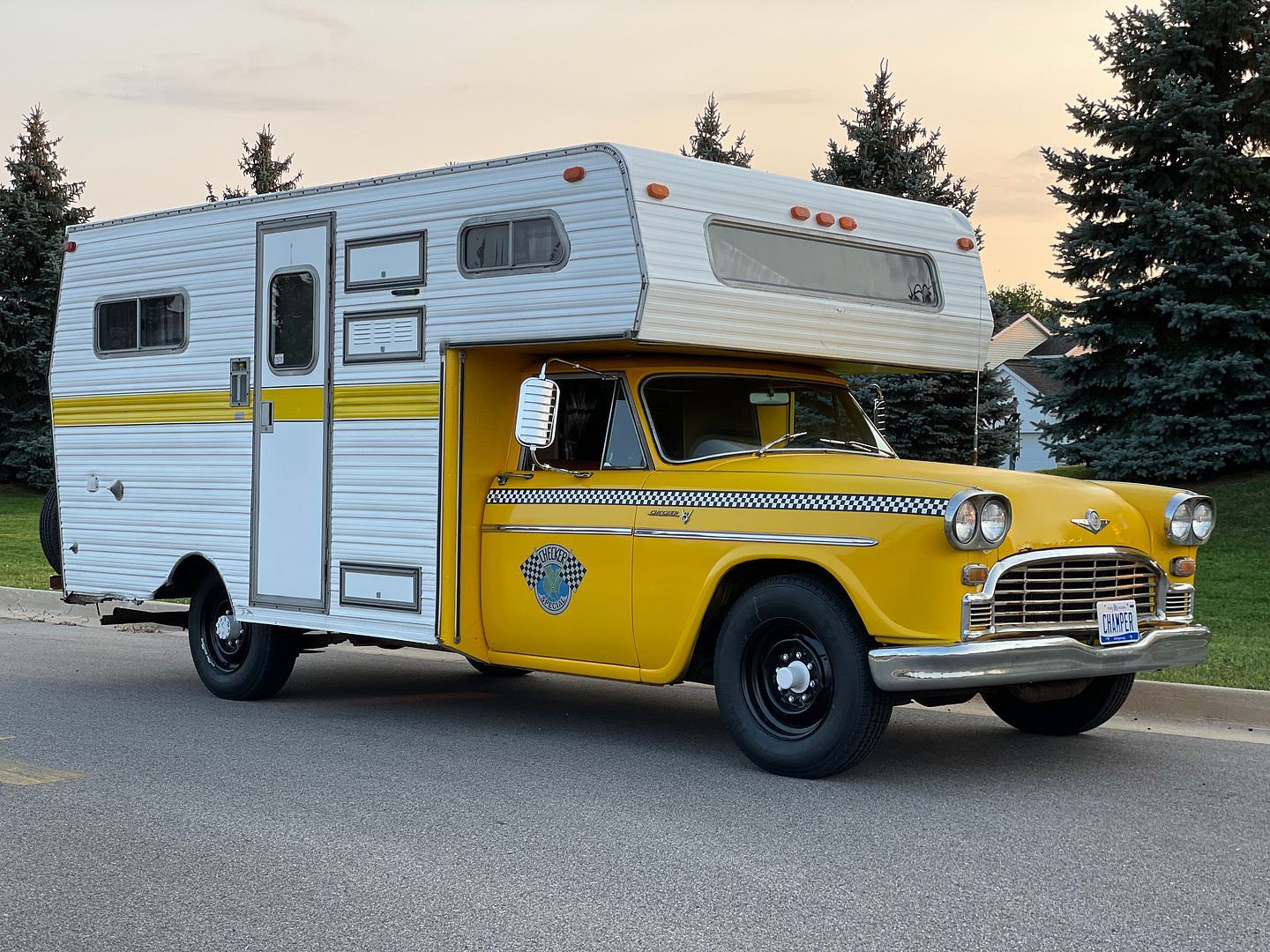
The post The Champer: A Rare Checker Cab Camper appeared first on Silodrome.
from Silodrome https://silodrome.com/champer-checker-cab-camper/
via gqrds

